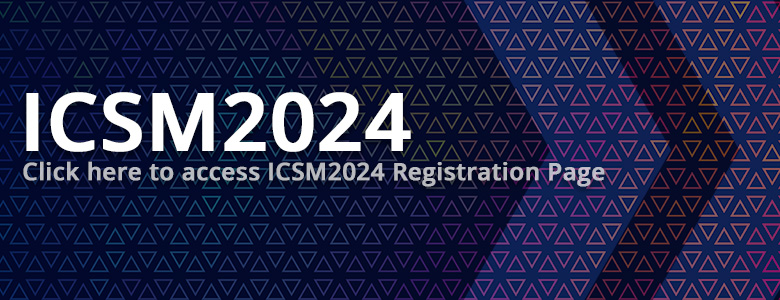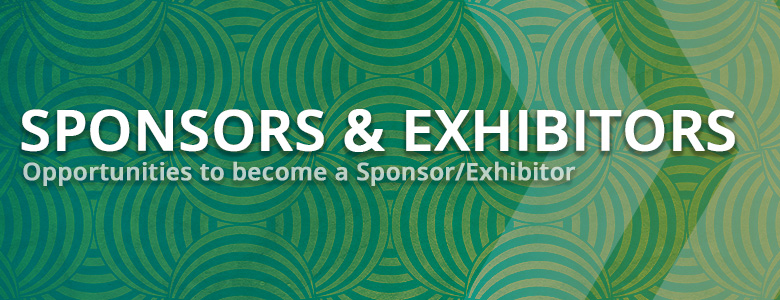This page for confirmed sessions is being updated frequently. Some revisions are being made continuously with feedback from the session co-organizers. You may please keep updated! Last Update 25.12.2023
The Co-Organizers, Confirmed Sessions, and Session Chairs/Moderators
Vortex Matter, Dynamics and Pinning
 The Session will continue its tradition from the previous ICSM Conferences to bring together various aspects, both theoretical and experimental, from vortex matter, dynamics and pinning, vortex visualization, etc. The session will also include contributions regarding vortices in relation to meso-and nano-structures, nanotechnology of pinning centers, and any other aspect related to vortex matter.
The Session will continue its tradition from the previous ICSM Conferences to bring together various aspects, both theoretical and experimental, from vortex matter, dynamics and pinning, vortex visualization, etc. The session will also include contributions regarding vortices in relation to meso-and nano-structures, nanotechnology of pinning centers, and any other aspect related to vortex matter.
Sessions Topics Include (but not limited to) :
- Artificial Pinning in Superconductors
- Magnetic Vortex Dynamics
- Vortex Dynamics in Superconductors
- Vortex Matter: Fundamental Properties and Simulations
- Vortices and Nanostructured Superconductors
Session Organizer/Moderator
Adrian Crisan
 Adrian Crisan obtained his M.Sc in Physics at the University of Bucharest in 1985, Ph.D. in 1994 at the Institute of Atomic Physics Bucharest, and D.Sc. in 2013 at the University of Birmingham U.K. Worked at NMP Bucharest, Univ Rome (1988-1989), AIST Tsukuba Japan (2000-2002 and 2006), Unıv Bath (2002-2004) and Univ. Birmingham, UK (2007-2015). He has won a NATO/Royal Society Fellowship in UK and, STA/JSPS short-term, long-term, and invitational fellowship in Japan. He has won the prestigious Marie Curie Excellence Grant on a proposal regarding artificial pinning in HTS films forming and leading an MC team at Birmingham Univ. He has published over 150 papers with over 1000 citations, 3 chapters in books, edited the book’ Vortices and Nanostructured Superconductors at Springer, and presented a large number of invited and contributed talks at international conferences. Now Senior Scientist working at NMP Bucharest.
Adrian Crisan obtained his M.Sc in Physics at the University of Bucharest in 1985, Ph.D. in 1994 at the Institute of Atomic Physics Bucharest, and D.Sc. in 2013 at the University of Birmingham U.K. Worked at NMP Bucharest, Univ Rome (1988-1989), AIST Tsukuba Japan (2000-2002 and 2006), Unıv Bath (2002-2004) and Univ. Birmingham, UK (2007-2015). He has won a NATO/Royal Society Fellowship in UK and, STA/JSPS short-term, long-term, and invitational fellowship in Japan. He has won the prestigious Marie Curie Excellence Grant on a proposal regarding artificial pinning in HTS films forming and leading an MC team at Birmingham Univ. He has published over 150 papers with over 1000 citations, 3 chapters in books, edited the book’ Vortices and Nanostructured Superconductors at Springer, and presented a large number of invited and contributed talks at international conferences. Now Senior Scientist working at NMP Bucharest.
Invited speakers include:
Simon Bending (University of Bath, UK)
Gianluca Ghigo (Politecnico di Torino, Italy)
Enrico Silva (Università Roma Tre, Italy)
Massimiliano Polichetti (Universita di Salerno, Italy)
Gaia Grimaldi (CNR-SPIN Italy)
Charles Reichhardt (Los Alamos National Laboratory, USA)
Tomasz Cichorek (Polish Academy of Sciences, Poland)
Armando Galluzzi (University of Salerno, Italy)
Serena Eley (University of Washington USA)
Ilaria Maccari (Paul Scherrer Institut Switzerland)
Andreas Glatz (Department of Physics, Northern Illinois University, USA)
Abstract IDs:
[1023],[1285],[1175],[1285],[1285],[1282],[1285],[1059],[1064],[1133],[1369],[1348],[1060],[1114],[1233],[1017],[1116],[1165],[1256],[1269],[1074]
Topological and Unconventional Superconductivity in Low-Dimensional Magnet-Superconductor Hybrid Systems
 One of the major challenges for the future of quantum computation is the drastic reduction of the error rate associated with quantum decoherence phenomena. Robust topological qubits, as realized by Majorana states, may ultimately provide a solution and constitute a new direction of topological quantum computation. However, unambiguous identification of Majorana states requires well-defined model-type platforms.
One of the major challenges for the future of quantum computation is the drastic reduction of the error rate associated with quantum decoherence phenomena. Robust topological qubits, as realized by Majorana states, may ultimately provide a solution and constitute a new direction of topological quantum computation. However, unambiguous identification of Majorana states requires well-defined model-type platforms.
Magnet-superconductor hybrid (MSH) systems provide the most promising platforms for realizing unconventional types of superconductivity. The Session will focus on recent exciting developments in the theoretical prediction and understanding of topological superconductivity and associated zero-energy Majorana modes as well as experimental breakthroughs based on advanced nanofabrication techniques for realizing well-defined magnet-superconductor hybrid systems. Potential applications for topological quantum computation will be discussed, taking into account recent progress regarding concepts and the design of devices based on topologically protected qubits.
Session Topics Include (but not limited to) :
• Nanofabrication of magnet-superconductor hybrid (MSH) systems
• Measurement tools for probing topological band structures
• Topological phase diagrams of MSH systems
• Emergence of Majorana zero modes in MSH systems
• Concepts for braiding Majorana modes
• Design of topologically protected qubits
• Future of topological quantum computation
Session Organizer/Moderator
Roland Wiesendanger
 Roland Wiesendanger is a professor of Experimental Physics at the University of Hamburg. His scientific interests include nanomagnetism and nanospintronics, unconventional superconductivity, and topological physics. Since the end of the eighties, Roland Wiesendanger pioneered the technique of Spin-Polarized Scanning Tunneling Microscopy (SP-STM) which allowed the first real-space observation of magnetic structures at the atomic level, leading to numerous discoveries of novel types of magnetic states and phenomena in low-dimensional systems. Roland Wiesendanger published more than 650 scientific articles, review papers, and book chapters which have been cited more than 40.000 times. He is the author of two textbooks and editor of nine books and eight conference proceedings. He has given 600 invited talks at international conferences, universities, and research institutes. He is a member of numerous scientific societies and has received numerous prizes and awards.
Roland Wiesendanger is a professor of Experimental Physics at the University of Hamburg. His scientific interests include nanomagnetism and nanospintronics, unconventional superconductivity, and topological physics. Since the end of the eighties, Roland Wiesendanger pioneered the technique of Spin-Polarized Scanning Tunneling Microscopy (SP-STM) which allowed the first real-space observation of magnetic structures at the atomic level, leading to numerous discoveries of novel types of magnetic states and phenomena in low-dimensional systems. Roland Wiesendanger published more than 650 scientific articles, review papers, and book chapters which have been cited more than 40.000 times. He is the author of two textbooks and editor of nine books and eight conference proceedings. He has given 600 invited talks at international conferences, universities, and research institutes. He is a member of numerous scientific societies and has received numerous prizes and awards.
Invited speakers include:
Dirk Morr (University of Illinois at Chicago, USA)
Levente Rozsa (Wigner Institute, Budapest, Hungary)
Ioannis Ioannidis (University of Hamburg, Germany)
Roberto Lo Conte (Universiy of Groningen,Netherlands)
Javad Shabani (Center for Quantum Information Physics (CQIP), USA)
Aksel Kobiałka (University of Uppsala Sweden)
Abstract IDs:
[1167],[1047],[1043],[203],[1140],[1332]
Bulk Superconductors
 This session will be centered on the various preparation techniques and procedures, the characterizations, and the possible applications of superconducting materials when they are considered in bulk form.
This session will be centered on the various preparation techniques and procedures, the characterizations, and the possible applications of superconducting materials when they are considered in bulk form.
Sessions Topics Include (but not limited to) :
- Bulk superconductors
- High-Tc Cuprates
- Superconducting Materials Processing and Structural Properties
- Thermal, Magnetic and Electrical Properties of Superconductors
Session Organizer/Moderator
S. Barış Güner
 S. Baris Guner is an associate professor of the Recep Tayyip Erdogan University (RTEU) in Turkey since February 2021. He received Ph.D. degree from RTEU in Rize in 2017. During the PhD thesis, he worked with many superconducting groups from the Brunel University, the University of Cambridge, the Tokyo University of Agriculture and Technology, etc. He received the Academic Encouragement Prize of RTEU in Turkey in 2017. He has published papers focus on REBCO Bulk Superconductors, Single Grain and Multiseeded Superconducting Materials Processing, Magnetic Levitation, Trapped Field and Structural Properties. Details about his research activities can be found here https://avesis.erdogan.edu.tr/sbaris.guner/yayinlar
S. Baris Guner is an associate professor of the Recep Tayyip Erdogan University (RTEU) in Turkey since February 2021. He received Ph.D. degree from RTEU in Rize in 2017. During the PhD thesis, he worked with many superconducting groups from the Brunel University, the University of Cambridge, the Tokyo University of Agriculture and Technology, etc. He received the Academic Encouragement Prize of RTEU in Turkey in 2017. He has published papers focus on REBCO Bulk Superconductors, Single Grain and Multiseeded Superconducting Materials Processing, Magnetic Levitation, Trapped Field and Structural Properties. Details about his research activities can be found here https://avesis.erdogan.edu.tr/sbaris.guner/yayinlar
Invited speakers include:
Xin Yao (Shanghai Jiao Tong University, China)
Pavel Diko (Slovak Academy of Sciences, Slovakia)
Philippe Vanderbemden (University of Liege, Belgium)
Abstract IDs:
[1065],[1146],[1085],[1307],[1310],[1328],[1331],[1322]
MgB2 – Materials and Applications
MgB2 is expected to be used in helium-free conditions at around 20K, which can easily be attained by a cryo-cooler or liquid hydrogen. The ignorable weak link in the form of grain coupling suggests that the MgB2 fabrication process is simpler than that of HTS superconductors. However, the critical current properties of MgB2 bulks, tapes, and wires still do not reach the level of practical applications due to low density, the inclusion of impurity phases, oxidation of constituent elements and so on. The purpose of the session is to understand the present status of MgB2 and to discuss the improvement of current-carrying characteristics for the wide range of applications of MgB2. Wire production using in-situ and ex-situ methods, the techniques PIT, CTFF, and IMD will also be debated in view of Jc enhancement and persistent current joints. Permanent Magnets made of bulks and their modeling and applications will be included.
Sessions Topics Include (but not limited to) :
• Fabrication of bulks, thin films, wire and tapes
• Microstructure and critical current densities
• Flux pinning
• AC loss
• Mechanical properties
• Applications
• Joints fabrication and physics
Session Organizer/Moderator
Akiyasu Yamamoto & Hiroaki Kumakura
 Akiyasu Yamamoto has been an associate professor at the Tokyo University of Agriculture and Technology since 2015. He obtained his B.E., M.E., and Ph.D. from the University of Tokyo. In 2017, he received the Award of Young Scientists from the Minister of MEXT, Japan. He has published papers focused on the realization of MgB2 conductors by advanced processing techniques in addition to Permanent magnet with MgB2 bulk for magnetic applications.
Akiyasu Yamamoto has been an associate professor at the Tokyo University of Agriculture and Technology since 2015. He obtained his B.E., M.E., and Ph.D. from the University of Tokyo. In 2017, he received the Award of Young Scientists from the Minister of MEXT, Japan. He has published papers focused on the realization of MgB2 conductors by advanced processing techniques in addition to Permanent magnet with MgB2 bulk for magnetic applications.
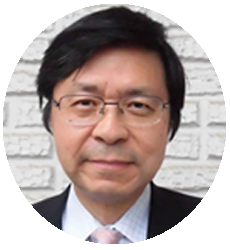 Hiroaki Kumakura was born in 1952. He obtained his B.E.(1976) and M.E.(1978) from the University of Tokyo. He was a director at Superconducting Materials Center (2005-2011), National Institute for Materials Science (NIMS), professor at Graduate School of Pure and Applied Sciences, University of Tsukuba (2007-2013). He is now a Special Researcher in NIMS, President of the Cryogenics and Superconductivity Society of Japan, and a Professor Emeritus, at the University of Tsukuba. He has been engaged in the development of wires and tapes of various superconductors, such as Nb3Al, Bi-based oxides, MgB2, and iron pnictides.
Hiroaki Kumakura was born in 1952. He obtained his B.E.(1976) and M.E.(1978) from the University of Tokyo. He was a director at Superconducting Materials Center (2005-2011), National Institute for Materials Science (NIMS), professor at Graduate School of Pure and Applied Sciences, University of Tsukuba (2007-2013). He is now a Special Researcher in NIMS, President of the Cryogenics and Superconductivity Society of Japan, and a Professor Emeritus, at the University of Tsukuba. He has been engaged in the development of wires and tapes of various superconductors, such as Nb3Al, Bi-based oxides, MgB2, and iron pnictides.
Invited speakers include:
Takahiro Kondo (University of Tsukuba, Japan)
Akihiro Kikuchi (National Institute for Materials Science, Japan)
Dongliang Wang (Chinese Academy of Sciences, China)
Petre Badica (National Institute of Materials Physics Romania)
Abstract IDs:
[1036],[1155],[1046],[1111]
Superconductors Under Extreme Conditions of Pressure and Strain
 Superconductivity is among the most fascinating and well-studied quantum states of matter. Almost 8 years passed after discovering 200K superconductivity in the highly compressed hydrogen sulfide. There are many theoretical works for not only the explanation of superconductivity but for other candidates of superconductors at high pressure. Despite over 100 years of research, a detailed understanding of how features of the normal-state electronic structure determine superconducting properties has remained elusive. For instance, the ability to deterministically enhance the superconducting transition temperature by design, rather than by serendipity, has been a long sought-after goal in condensed matter physics and materials science, but achieving this objective may require new tools, techniques, and approaches. In this session, the recent investigation in both experimental and theoretical studies will be discussed. This session is dedicated to all kinds of superconductors in both experimental and theoretical studies to elucidate the understanding of superconductivity transition.
Superconductivity is among the most fascinating and well-studied quantum states of matter. Almost 8 years passed after discovering 200K superconductivity in the highly compressed hydrogen sulfide. There are many theoretical works for not only the explanation of superconductivity but for other candidates of superconductors at high pressure. Despite over 100 years of research, a detailed understanding of how features of the normal-state electronic structure determine superconducting properties has remained elusive. For instance, the ability to deterministically enhance the superconducting transition temperature by design, rather than by serendipity, has been a long sought-after goal in condensed matter physics and materials science, but achieving this objective may require new tools, techniques, and approaches. In this session, the recent investigation in both experimental and theoretical studies will be discussed. This session is dedicated to all kinds of superconductors in both experimental and theoretical studies to elucidate the understanding of superconductivity transition.
Session Topics Include (but not limited to) :
• Synthesis and Characterization of hydrides
• Theoretical prediction and design of high-Tc Superconductor
• Technical investigation in extreme conditions with pressure and strain for hydrides
• Studies of other superconducting materials with pressure and strain
Session Organizer/Moderator
Rustem Khasanov
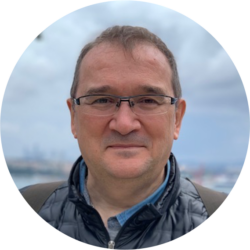 Rustem Khasanov studied physics at Kazan State University (Russia). He received his Ph.D. at the Physics Institute of the University of Zürich in 2004, where he worked in the group of Prof. Hugo Keller and Nobel Prize Laureate Prof. Alex Müller. Following two-year postdoctoral research at the Ames Laboratory (USA), in 2008 he joined the Laboratory for the muon spin spectroscopy at the Paul Scherrer Institute (Swityerland). His current research interest focuses on the muon spin rotation/relaxation studies of emergent electronic materials and physical phenomena under high-pressure extreme conditions. He has published over 290 peer-reviewed journal papers with over than 8000 cittions.
Rustem Khasanov studied physics at Kazan State University (Russia). He received his Ph.D. at the Physics Institute of the University of Zürich in 2004, where he worked in the group of Prof. Hugo Keller and Nobel Prize Laureate Prof. Alex Müller. Following two-year postdoctoral research at the Ames Laboratory (USA), in 2008 he joined the Laboratory for the muon spin spectroscopy at the Paul Scherrer Institute (Swityerland). His current research interest focuses on the muon spin rotation/relaxation studies of emergent electronic materials and physical phenomena under high-pressure extreme conditions. He has published over 290 peer-reviewed journal papers with over than 8000 cittions.
Invited speakers include:
Elena Gati (Max Planck Institute for Chemical Physics of Solids Dresden, Germany)
Vadim Grinenko (Institute of Solid State and Materials Physics, Germany)
Hans-Henning Klauss (Institute of Solid State and Materials Physics, Germany)
Sergey Bud’ko (Iowa State University of Science and Technology, USA)
Gianrico Lamura (CNR – SuPerconducting and other INnovative materials and devices institute, Italy)
Valentin Tafour (UC Davis Department of Physics and Astronomy, USA)
Ryosuke Akashi (National Institutes for Quantum Science and Technology, Japan)
Jaeyong Kim (Hanyang University South Korea)
Rustem Khasanov (Laboratory for Muon Spin Spectroscopy, Paul Scherrer Institute, Switzerland)
Tonica Valla (Donostia International Physics Center Spain)
Abstract IDs:
[1079],[1306],[1072],[1073],[1343],[1235],[1119],[1201],[1189],[1214]
Superconductivity in Lower Dimension
 The continuing miniaturization of a broad range of devices, gadgets, and electronic schemes creates new challenges and demands a deeper understanding of different aspects of charge and heat transport as well as fluctuation phenomena in a variety of superconducting nanostructures. Already now such structures constitute central elements of many nanodevices, and in the future, a number of their applications in metrology, informatics, electronics, etc. is expected to grow further. In addition, reaching a better understanding of salient features of superconductivity in lower dimensions belongs to the scope of most fundamental problems of modern condensed matter physics. The session is intended to bring together leading scientists actively working in different sub-fields of low dimensional superconductivity to overview the present status of the field and most recent advances, visualize further research prospects, and promote new collaborations.
The continuing miniaturization of a broad range of devices, gadgets, and electronic schemes creates new challenges and demands a deeper understanding of different aspects of charge and heat transport as well as fluctuation phenomena in a variety of superconducting nanostructures. Already now such structures constitute central elements of many nanodevices, and in the future, a number of their applications in metrology, informatics, electronics, etc. is expected to grow further. In addition, reaching a better understanding of salient features of superconductivity in lower dimensions belongs to the scope of most fundamental problems of modern condensed matter physics. The session is intended to bring together leading scientists actively working in different sub-fields of low dimensional superconductivity to overview the present status of the field and most recent advances, visualize further research prospects, and promote new collaborations.
Session Topics Include (but not limited to) :
• Quantum phase slips in superconducting nanowires
• Superconductor-insulator quantum phase transitions
• Superconducting qubits and metamaterials
• Superconductivity and thermoelectric effects
• Topological insulators and Majorana fermions
• Crossed Andreev reflection and Cooper pair splitting
Session Organizer/Moderator
Andrei Zaikin

Professor Zaikin is a world-renowned expert in the theory of superconductivity, quantum nanotransport, quantum dissipation, and quantum decoherence. He graduated from the Moscow Institute of Physics and Technology in 1979 and obtained his PhD in theoretical physics in 1983 from P.N. Lebedev Physical Institute in Moscow where he also continued his scientific career. Starting in 1995 he was permanently working in Germany for Karlsruhe Institute of Technology (KIT), a merger of Karlsruhe University and Forschungszentrum Karlsruhe. A.D. Zaikin is also a PI at the I.E. Tamm Theory Department of P.N. Lebedev Physical Institute and a research professor at the National Research University Higher School of Economics in Moscow, Russia.
Invited speakers include:
Andrei Zaikin (Karlsruhe Institute of Technology (KIT), Germany)
Alexandr Latyshev (Geneva University, Switzerland)
Andrew G. Semenov (Lebedev Institute, Moscow)
Alexei Radkevich (Lebedev Institute, Moscow, Russia)
Vadim Khrapai (Institute for Solid State Physics, Chernogolovka, Russia)
Andrey Rogachev (Department of Physics and Astronomy, University of Utah USA)
Oleg Astafiev (Skolkovo Institute of Science and Technology Russia)
Degiorgi Leonardo (ETH Zürich Switzerland)
Rongying Jin (University of South Carolina USA)
Abstract IDs:
[1104],[1068],[1080],[1184],[1206],[1317],[1318],[1329],[209],[233]
Effects of Topology in Superconductor Nanoarchitectures
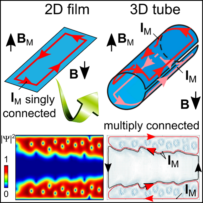 Current challenges and prospect directions of fundamental and applied research in the fields of superconductivity and magnetism in 3D nanoarchitectures will be represented. Experimental techniques for the fabrication and characterization of 3D superconductors and magnetic elements at the nanoscale will be discussed followed by reviewing representative effects in the dynamics of topological modes therein. The broad topical scope of the Session will embrace, in particular, additive manufacturing of advanced superconducting materials; nanopillars in copper-oxide superconductors; 3D superconductor nanoarchitectures using van der Waals structures; vortex dynamics in ferromagnet/superconductor bilayers; spin-wave and vortex dynamics in 3D nanomembranes; cryogenic magnon fluxonics, 2D and 3D nanobridges as building blocks for new device concepts; hybrid Josephson junctions and nanodevices for quantum hardware. The perspectives of magnetic 3D architectures are aligned along: curvilinear magnetism; fabrication of curvilinear and 3D magnetic architectures, advanced characterization of 3D magnetic architectures, curvilinear architectures with complex magnetic ordering (ferromagnets and antiferromagnets) and magnetization dynamics in 3D magnetic architectures.
Current challenges and prospect directions of fundamental and applied research in the fields of superconductivity and magnetism in 3D nanoarchitectures will be represented. Experimental techniques for the fabrication and characterization of 3D superconductors and magnetic elements at the nanoscale will be discussed followed by reviewing representative effects in the dynamics of topological modes therein. The broad topical scope of the Session will embrace, in particular, additive manufacturing of advanced superconducting materials; nanopillars in copper-oxide superconductors; 3D superconductor nanoarchitectures using van der Waals structures; vortex dynamics in ferromagnet/superconductor bilayers; spin-wave and vortex dynamics in 3D nanomembranes; cryogenic magnon fluxonics, 2D and 3D nanobridges as building blocks for new device concepts; hybrid Josephson junctions and nanodevices for quantum hardware. The perspectives of magnetic 3D architectures are aligned along: curvilinear magnetism; fabrication of curvilinear and 3D magnetic architectures, advanced characterization of 3D magnetic architectures, curvilinear architectures with complex magnetic ordering (ferromagnets and antiferromagnets) and magnetization dynamics in 3D magnetic architectures.
Sessions Topics Include (but not limited to) :
- Superconductivity in 2D and 3D structures
- Advanced fabrication methods
- Magnetic flux and spin transport
- Superconductivity in curved geometries
- Topological modes in 3D nanoarchitectures
- Theoretical description and numerical modeling
- Chaos and ordering of the vortex motion
- Superconductor-based hybrid structures
- Curvilinear magnetism: fundamentals and perspectives
- Geometrically curved, skin-conformal and self-healable magnetoelectronics
- Fabrication of curvilinear and 3D magnetic architectures
- Advanced characterization of 3D magnetic architectures
- Curvilinear architectures with complex magnetic ordering (ferromagnets and antiferromagnets)
- Magnetization dynamics in 3D magnetic architectures
Session Organizer/Moderator
Vladimir M. Fomin, Alessio Zaccone and Rosa Cordoba
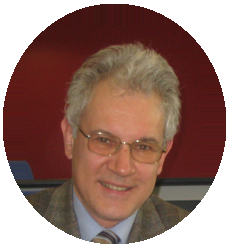 Vladimir M. Fomin received his Ph.D. from the Moldova State University in 1978 and Dr. habil. from the Academy of Sciences of Moldova in 1990. Since 1991 Professor in Theoretical Physics at the Moldova State University (Chişinău, Republic of Moldova). Since 2009 Research Professor at the Institute for Integrative Nanosciences (IIN), Leibniz Institute for Solid State and Materials Research (IFW) Dresden (Germany). Awards: State Prize of Moldova 1987. Diploma of a Scientific Discovery of the Phenomenon of the Propagation of Spatially-Extended Interface Phonon Polaritons in Composite Superlattices (Academy of Natural Sciences of Russia, 1999). Medal “Academician P. L. Kapitsa” (Academy of Natural Sciences of Russia, 2000). Honorary Member of the Academy of Sciences of Moldova (2007). Scientific interests: theory of strain-induced self-rolled nanoarchitectures, topological effects in quantum rings and curved 3D micro-and nanoarchitectures, phase boundaries and vortex matter in micro-and nanoarchitectures and patterned superconductors, superconducting properties of metallic nanograins, phonons, vibrational excitations and polaronic effects in nanostructures, topological states of light and spin-orbit coupling in microcavities, optical properties of quantum dots, thermoelectric properties of semiconductor nanostructures, surface-induced magnetic anisotropy in mesoscopic systems of dilute magnetic alloys.
Vladimir M. Fomin received his Ph.D. from the Moldova State University in 1978 and Dr. habil. from the Academy of Sciences of Moldova in 1990. Since 1991 Professor in Theoretical Physics at the Moldova State University (Chişinău, Republic of Moldova). Since 2009 Research Professor at the Institute for Integrative Nanosciences (IIN), Leibniz Institute for Solid State and Materials Research (IFW) Dresden (Germany). Awards: State Prize of Moldova 1987. Diploma of a Scientific Discovery of the Phenomenon of the Propagation of Spatially-Extended Interface Phonon Polaritons in Composite Superlattices (Academy of Natural Sciences of Russia, 1999). Medal “Academician P. L. Kapitsa” (Academy of Natural Sciences of Russia, 2000). Honorary Member of the Academy of Sciences of Moldova (2007). Scientific interests: theory of strain-induced self-rolled nanoarchitectures, topological effects in quantum rings and curved 3D micro-and nanoarchitectures, phase boundaries and vortex matter in micro-and nanoarchitectures and patterned superconductors, superconducting properties of metallic nanograins, phonons, vibrational excitations and polaronic effects in nanostructures, topological states of light and spin-orbit coupling in microcavities, optical properties of quantum dots, thermoelectric properties of semiconductor nanostructures, surface-induced magnetic anisotropy in mesoscopic systems of dilute magnetic alloys.
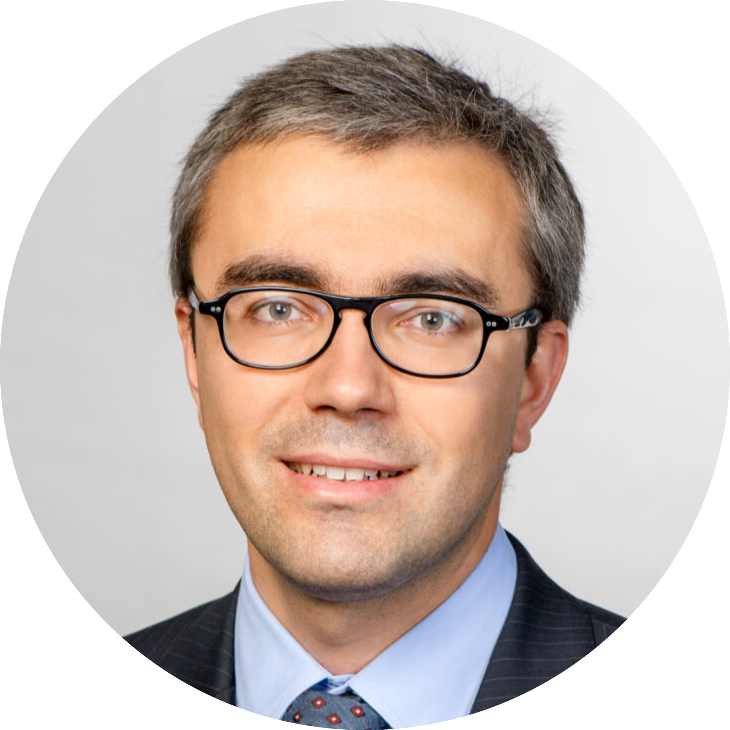 Born in 1981, after a PhD at ETH Zurich he has been on the faculty of the Technical University of Munich, the University of Cambridge, and the University of Milan. In 2011 with his student E. Scossa-Romano he analytically solved the elasticity problem of random sphere packings and elastic random networks. Later he developed an equation (Krausser, Samwer, Zaccone PNAS 2015) for the viscosity of liquids and a molecular-level theory of the glass transition based on thermoelasticity, the latter with E. Terentjev. With K. Trachenko, he discovered and mathematically predicted that the low-frequency shear modulus of liquids scales with the inverse cubic power of the (sub-millimeter) confinement length, a law that has been observed experimentally in many different systems. More recently, he has developed the anharmonic theory of phonon-mediated superconductivity, which extends the BCS theory to materials with anharmonicity, and disorder and to high-pressure materials.
Born in 1981, after a PhD at ETH Zurich he has been on the faculty of the Technical University of Munich, the University of Cambridge, and the University of Milan. In 2011 with his student E. Scossa-Romano he analytically solved the elasticity problem of random sphere packings and elastic random networks. Later he developed an equation (Krausser, Samwer, Zaccone PNAS 2015) for the viscosity of liquids and a molecular-level theory of the glass transition based on thermoelasticity, the latter with E. Terentjev. With K. Trachenko, he discovered and mathematically predicted that the low-frequency shear modulus of liquids scales with the inverse cubic power of the (sub-millimeter) confinement length, a law that has been observed experimentally in many different systems. More recently, he has developed the anharmonic theory of phonon-mediated superconductivity, which extends the BCS theory to materials with anharmonicity, and disorder and to high-pressure materials.
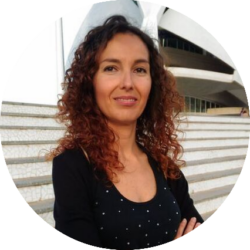 Dr. ROSA CORDOBA did a PhD thesis in Material Science obtained in 2013. Her current research interests focus on the nanofabrication of advanced materials in the three dimensions of space by using focused beams of electrons or ions (Ga+, Ne+ and He+). She has carried out novel studies on the composition and microstructure of the nanostructures at the nanoscale, as well as on their magnetotransport properties. Such advanced nanomaterials could be used as building blocks for a future generation of nano-electronic devices. She is a co‐author of 47 publications in research journals and 7 book chapters and, its total number of citations is 941. Her H‐index is 18. She has participated in 47 national or international conferences/workshops, in which she has given 20 oral communications, 6 of them were invited oral contributions.
Dr. ROSA CORDOBA did a PhD thesis in Material Science obtained in 2013. Her current research interests focus on the nanofabrication of advanced materials in the three dimensions of space by using focused beams of electrons or ions (Ga+, Ne+ and He+). She has carried out novel studies on the composition and microstructure of the nanostructures at the nanoscale, as well as on their magnetotransport properties. Such advanced nanomaterials could be used as building blocks for a future generation of nano-electronic devices. She is a co‐author of 47 publications in research journals and 7 book chapters and, its total number of citations is 941. Her H‐index is 18. She has participated in 47 national or international conferences/workshops, in which she has given 20 oral communications, 6 of them were invited oral contributions.
Invited speakers include:
Giovanni Ummarino (Politecnico di Torino, Italy)
Alexander Wietek (MPI Dresden,Germany)
María José Pérez Martinez (CSIC, Zaragoza, Spain)
Anna Palau (CSIC, Barcelona, Spain)
María José Calderon (ICMM, Madrid, Spain)
Wolfgang Lang (University of Vienna, Austria)
Joris van de Vondel (KU Leuven, Belgium)
Dirk Grundler (EPFL Switzerland)
Alejandro Silhanek (Uni Liége, Belgium)
Thomas Schmidt (Université du Luxembourg, Luxembourg)
Alexei Semenov (DLR Berlin, Germany)
Elina Zhakina (Max-Planck-Institute for Chemical Physics of Solids, Germany)
Abstract IDs:
[1041],[1069],[1122],[1142],[1149],[1150],[1169],[1202],[1211],[1222],[1254],[1286],[1296],[1300],[1303]
Nonuniform Magnetic Textures
 Nonuniform magnetic textures have attracted significant attention due to their interesting properties when subjected to external stimuli such as magnetic fields or currents. In this session we focus on recent experimental advances on Skyrmions, Domain Walls and other Spin Textures, e.g. hopfions, on their Micromagnetic and Atomistic Modeling, as well as soft X-Ray based imaging techniques for the direct observation of nonuniform magnetization states.
Nonuniform magnetic textures have attracted significant attention due to their interesting properties when subjected to external stimuli such as magnetic fields or currents. In this session we focus on recent experimental advances on Skyrmions, Domain Walls and other Spin Textures, e.g. hopfions, on their Micromagnetic and Atomistic Modeling, as well as soft X-Ray based imaging techniques for the direct observation of nonuniform magnetization states.
Session Topics Include (but not limited to) :
- Skyrmions and Antiskyrmions
- Magnetization Dynamics of Spin Textures
- X-Ray imaging techniques
- Time-Resolved X-Ray Microscopy
- Micromagnetic Modeling
- Atomistic Modeling
- Theory of Magnetism
- Domain Walls and their dynamics
- Stripe and Helical states
Session Organizer/Moderator
Sebastian Wintz – Sabri Koraltan
 Sabri Koraltan studied and started his academic career at the University of Vienna in Vienna, Austria at the department for physics of functional materials. His main scientific interests are magnetic skyrmions for sensing and storage concepts, artificial spin systems as well as magnetic multilayers for functional devices.
Sabri Koraltan studied and started his academic career at the University of Vienna in Vienna, Austria at the department for physics of functional materials. His main scientific interests are magnetic skyrmions for sensing and storage concepts, artificial spin systems as well as magnetic multilayers for functional devices.
 Sebastian Wintz received his PhD (Dr. rer. nat.) from Technische Universitaet Dresden, Germany in 2014. He currently holds a scientist position at the Helmholtz-Zentrum Berlin für Materialien und Energie. His main scientific interests are magnonic systems and their investigation using synchrotron based X-ray studies for imaging and their characterization.
Sebastian Wintz received his PhD (Dr. rer. nat.) from Technische Universitaet Dresden, Germany in 2014. He currently holds a scientist position at the Helmholtz-Zentrum Berlin für Materialien und Energie. His main scientific interests are magnonic systems and their investigation using synchrotron based X-ray studies for imaging and their characterization.
Invited speakers include:
Manfred Albrecht (Universität Augsburg, Germany)
Hans Josef Hug (Empa, Swiss Federal Laboratories for Materials Science and Technology, Switzerland)
Ping Che (Unité Mixte de Physique CNRS/Thales, Université Paris-Saclay, France)
Jakub Jurczyk (Institute of Applied Physics, Technical University of Vienna, Austria)
Olivier Boulle (SPINTEC, France)
Angela Wittmann (Johannes Gutenberg-Universität Mainz, Germany)
Max Birch (Max Planck Institute for Intelligent Systems, Germany)
Nikolai Kiselev (Peter Grünberg Institut and Institute for Advanced Simulation, Jülich, Germany)
Louise Desplat (Nanomat/Q-mat/CESAM, Université de Liège, Belgium)
Jan Masell (Karlsruhe Institute of Technology, Germany)
Oleg Tretiakov (University of New South Wales, Australia)
Guido Meier (Max Planck Institute for the Structure and Dynamics of Matter, Germany)
Ales Hrabec (Paul Scherrer Institut, Switzerland)
Santa Pile (Johannes Kepler University Linz, Austria)
Luke Turnbull (Max-Planck-Institute for Chemical Physics of Solids, Germany)
Tetsuya Nakamura (Tohoku University International Synchrotron Radiation Innovation and Smart Research Center, Japan)
Lisa-Marie Kern (Max-Born-Institut, Germany)
Saul Velez (Universidad Autónoma de Madrid, Spain)
Ondrej Wojewoda (CEITEC BUT, Brno University of Technology Czech Republic)
Thomas Schrefl (University for Continuing Education Krems Austria)
Tamer Karaman (Experimental Physics V, University of Augsburg Germany)
Abstract IDs:
[1075],[1108],[1137],[1138],[1143],[1207],[1305],[1313],[1320],[1324],[1325],[1326],[1337],[1345],[217],[1372]
Superconducting Spintronics: Novel Quantum Circuits
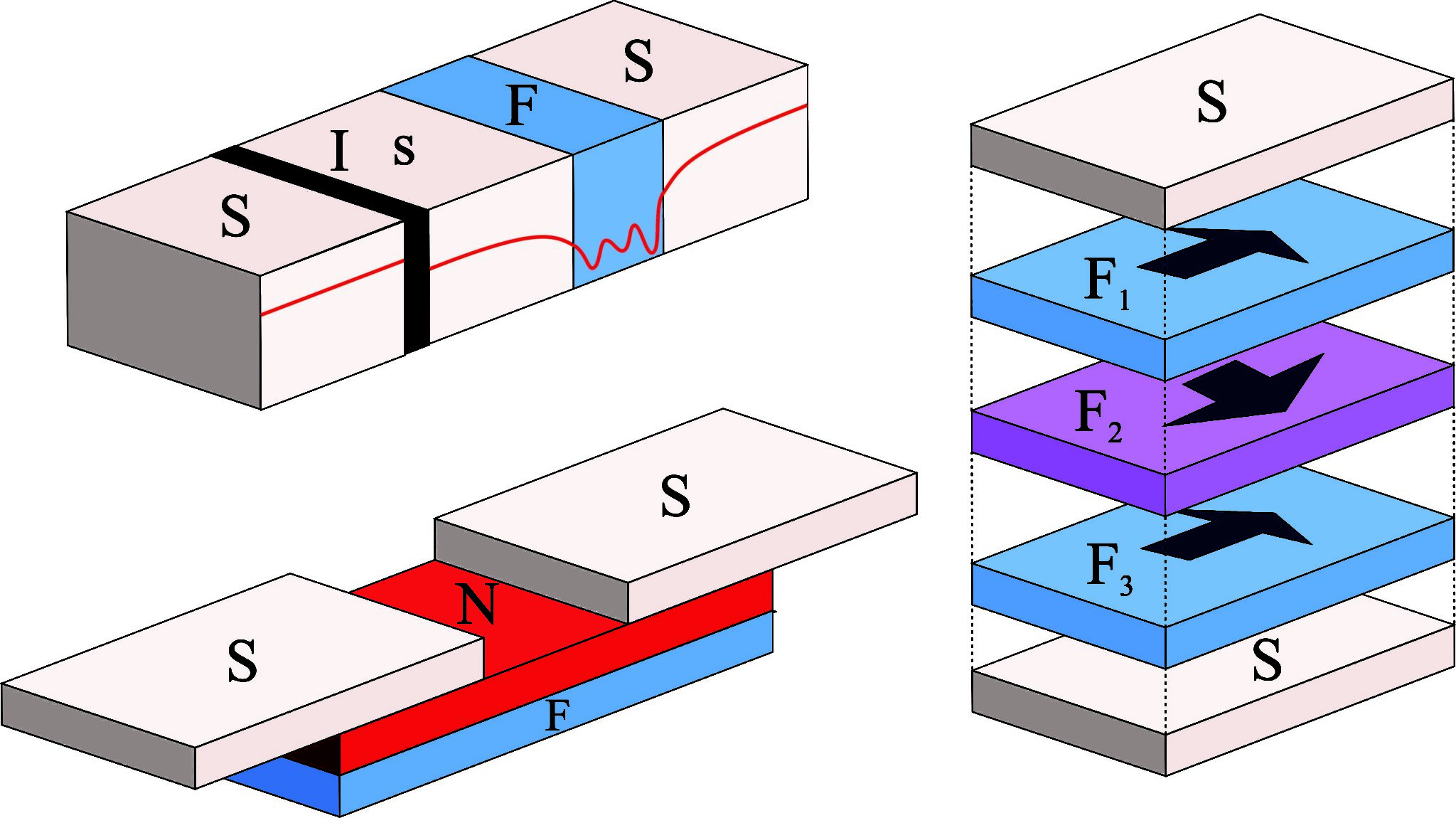 The emerging field of spintronics is based on electron spin and magnetization. This new area of research and technology aims at enhancing the storage capacity of computer hard drives and potentially play an important role in quantum computing’s future. Superconductor-ferromagnet (SF) structures are widely regarded as the building blocks of this superconducting spintronic technology. It is generally accepted that conventional spintronic devices typically require large currents with high resistance giving rise to heat concerns, so researchers are investigating the viability of superconductors showing no/low resistance (dc/ac) to the current flow. In superconductors, there is no magnetic field in the interior of the superconductor, while there is a saturated magnetic field presence in the ferromagnetic material, when these two materials meet at a boundary interface, there could be an electromagnetic proximity effect. This session will consist of world-wide leading speakers with new results in a way to understand longstanding questions about how SF structures interact, and these could lead to a fast and effective technology of superconducting spintronics.
The emerging field of spintronics is based on electron spin and magnetization. This new area of research and technology aims at enhancing the storage capacity of computer hard drives and potentially play an important role in quantum computing’s future. Superconductor-ferromagnet (SF) structures are widely regarded as the building blocks of this superconducting spintronic technology. It is generally accepted that conventional spintronic devices typically require large currents with high resistance giving rise to heat concerns, so researchers are investigating the viability of superconductors showing no/low resistance (dc/ac) to the current flow. In superconductors, there is no magnetic field in the interior of the superconductor, while there is a saturated magnetic field presence in the ferromagnetic material, when these two materials meet at a boundary interface, there could be an electromagnetic proximity effect. This session will consist of world-wide leading speakers with new results in a way to understand longstanding questions about how SF structures interact, and these could lead to a fast and effective technology of superconducting spintronics.
Session Topics Include (but not limited to) :
Proximity effects in SF structures
Josephson pi-juncitons
Spin-triplet supercurrents
Memory devices
Session Organizer/Moderator
Alexander A. Golubov – Anatolie Sidorenko

Dr. Alexander Golubov is an Associated Professor at Twente University. Published more than 400 scientific papers in internationally recognized journals, received over 12000 citations, h-index 54. APS Fellow (2021). His scientific interests involve theory of electronic transport in superconducting structures, including superconducting spintronics and the physics of unconventional and multiband superconductivity .
 Prof. Dr. Anatolie Sidorenko is specialized in the field of nanotechnologies and functional superconducting nanostructures. He is director of Institute of Electronic Engineering and Nanotechnologies Academy of Sciences of Moldova, author of over 400 scientific publications, 42 patents, the editor of 4 books published in “Springer”, the editor of two thematic series “Functional Nanostructures” of Beilstein Journal of Nanotechnology, associated editor of Moldavian Journal of the Physical Sciences, member of Moldavian Academy of Sciences, member of Deutsche Physikalische Gesellschaft (DPG).
Prof. Dr. Anatolie Sidorenko is specialized in the field of nanotechnologies and functional superconducting nanostructures. He is director of Institute of Electronic Engineering and Nanotechnologies Academy of Sciences of Moldova, author of over 400 scientific publications, 42 patents, the editor of 4 books published in “Springer”, the editor of two thematic series “Functional Nanostructures” of Beilstein Journal of Nanotechnology, associated editor of Moldavian Journal of the Physical Sciences, member of Moldavian Academy of Sciences, member of Deutsche Physikalische Gesellschaft (DPG).
Invited speakers include:
Valerii M. Vinokur (Terra Quantum AG, Switzerland)
Irina Bobkova (Moscow Institute of Physics and Technology, Russia)
Grigorii Bobkov (Moscow Institute of Physics and Technology, Russia)
Andrey Vasenko (HSE Tikhonov Moscow Institute of Electronics and Mathematics, Russia)
Vadim Geshkenbein (ETH Zurich, Switzerland)
Tairzhan Karabassov (Higher School of Economics, Moscow)
Oleg Mukhanov (SEEQC, Inc., USA)
Norman O. Birge (Michigan State University, USA)
Jan Aarts (Leiden University/Huygens-Kamerlingh Onnes Laboratory, Netherlands)
Yoshihiro Iwasa (University of Tokyo, Japan)
Alexander Bobkov (Moscow Institute of Physics and Technology Russia)
Alexander Golubov (University of Twente Netherlands)
Valeriy Ryazanov (Institute of Solid State Physics, Russian Academy of Sciences Russia)
Anastasia Guravova (National Research University Higher School of Economics Russia)
Anatolie Sidorenko (Technical University of Moldova, Institute of Electronic Engineering and Nanotechnologies Moldova)
Olcay Kizilaslan (Inonu University Türkiye)
Abstract IDs:
[1020],[1025],[1029],[1044],[1045],[1058],[1118],[1128],[1133],[1154],[1181],[1237],[1258],[1350]
Device Physics of Josephson Junctions and Their Fundamental Technologies
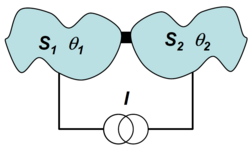 The Josephson effect is observed when two superconducting electrodes are weakly coupled and a Josephson junction is a natural converter of a d.c. voltage into a high-frequency current. From the prediction of the Josephson effect, tremendous progress has been made in the technology of superconducting electronics. In this session, there will be discussions on the Josephson effect from theoretical aspects up to applications. Many applications of superconductivity in electronics, sensors, and high-frequency devices are based on the Josephson effect.
The Josephson effect is observed when two superconducting electrodes are weakly coupled and a Josephson junction is a natural converter of a d.c. voltage into a high-frequency current. From the prediction of the Josephson effect, tremendous progress has been made in the technology of superconducting electronics. In this session, there will be discussions on the Josephson effect from theoretical aspects up to applications. Many applications of superconductivity in electronics, sensors, and high-frequency devices are based on the Josephson effect.
Sessions Topics Include (but not limited to) :
- Superconducting Quantum Interference Devices (SQUIDs)
- Superconducting Photon and Particle Detectors
- Digital Electronics
- Microwave Applications
- Superconducting Quantum Bits
- Superconducting THz emitters
- Topological superconductor-based Josephson junction
- Proximity and tunneling phenomena in JJ
Yılmaz Simsek, Olcay Kızılaslan
 Dr. Yılmaz Şimşek works in the area of Physics-based Materials Science including the design, synthesis, characterization, and understanding of new materials in a single crystal bulk/thin-film form to functionalize them for potential applications in innovative electronic devices.
Dr. Yılmaz Şimşek works in the area of Physics-based Materials Science including the design, synthesis, characterization, and understanding of new materials in a single crystal bulk/thin-film form to functionalize them for potential applications in innovative electronic devices.

Dr. Olcay Kizilaslan has worked on superconductor materials from different points of view, ranging from superconducting single crystal growth to the potential application of superconductivity. His main research area is on the intrinsic Josephson effect and superconducting THz emitters.
Invited speakers include:
Alexey Ustinov (Karlsruhe Institute of Technology, Germany)
Selçuk Köse (University of Rochester, USA)
Wolfgang Belzig (Universität Konstanz, Germany)
Khalil Harrabi (King Fahd University of Petroleum and Minerals, Saudi Arabia)
Thomas Ortlepp (CiS Forschungsinstitut für Mikrosensorik GmbH, Germany)
Edward Goldobin (Eberhard Karls Universität Tübingen, Germany)
Timur Filippov (HYPRES, Inc., USA)
Steven M Anlage (University of Maryland, USA)
Yulia Krasnikova (Fermilab, SQMS, USA)
Jie Ren (SIMIT, CAS China)
Mikhail Fistul (Theoretische Physik III, Ruhr-University Bochum Germany)
Luca Chirolli (Technology Innovation Institute United Arab Emirates)
Yılmaz Şimşek (Sabancı University Nanotechnology and Application Center Türkiye)
Nobuyuki Yoshikawa (Yokohama National University Japan)
Mustafa Celik (Hypres, Inc. USA)
Coenrad Fourie (Stellenbosch University South Africa)
Pascal Febvre (Université Savoie Mont Blanc France)
Abstract IDs:
[1381],[1042],[1283],[1039],[202],[1115],[235],[237],[1038],[1099],[1105],[1179],[1188],[1240],[1272],[1315],[201],[223],[236]
Novel Functional Magnetic Materials- Basic Approach and Applications
The overall goal of this session is to provide the most up to date information about the recent developments in different families of magnetic materials and future applications paying attention to basic aspects and on magnetic properties suitable for applications.
Sessions Topics Include (but not limited to) :
- Functional Magnetic Materials and Applications
- Advances in Nanomagnetism
- Magnetic Meta-materials
- Magnetic Recording, Sensors and Microwave Devices
- Novel Functional Magnetic Materials: Basic Approach and Applications
- Soft and Hard Magnetic Materials
- Boron Based Permanent Magnets & Magnetic Materials for Applications
- Magnet Science and Technology
- Biomedical applications of magnetism and magnetic materials
- Other Aspects of Magnetism and Magnetic Materials
Session Organizer/Moderator
Arcady Zhukov – Kateryna Levada
Prof. Dr. A.P. Zhukov graduated in 1980 from the Physics Chemistry Department of the Moscow Steel and Alloys Institute (presently the National University of Science and Technology). In 1988 he received a Ph.D. degree from the Institute of Solid State Physics (Chernogolovka) of the Russian Academy of Science, and in 2010 Doctor of Science (habilitation) in Moscow State Lomonosov University. Present employment Ikerbasque Research Professor at the Department of the Polymers and Advanced Materials of the University of Basque Country, Spain. Current fields of interest: amorphous and nanocrystalline ferromagnetic materials, magnetic micro-wires, giant magneto-impedance, giant magnetoresistance, and magnetoelastic sensors. He has published more than 600 referred papers in international journals (total number of citations of A. Zhukov’s papers, updated December 21, 2023: 11265, Citation H Index=58). A. Zhukov is included in the ‘Ranking of the World Scientists: World´s Top 2 % Scientists” by Stanford University, in the Rankings of 175 most relevant researchers in Material Science and of 224 most relevant researchers in Physics residents in Spain (DIH, https://grupodih.info), in the ranking of top Materials Science scientists ranking by www.Research.com, in the list of Most cited authors of J. Magn. Magn. Mater. (https://exaly.com/journal/12443/journal-of-magnetism-and-magnetic-materials/top-authors) and of Sensors and Actuators A: (https://exaly.com/journal/13143/sensors-and-actuators-a-physical/top-authors). A. Zhukov is an Associate Editor of IEEE Magnetic letters and International Journal on Smart Sensing and Intelligent Systems, member of several editorial boards (Crystals, Sensors by MDPI) guest Editor of J. Alloys Compounds (currently of the Special issue Honouring Prof. K.H.J Buschow), J. Magn. Magn. Mater, edited two books: “Novel Functional Magnetic Materials” and “High Performance Soft Magnetic Materials” in Springer, wrote two books: “Magnetic Properties and Applications of ferromagnetic microwires with amorphous and nanocrystalline structure” and “Magnetic sensors based on thin magnetically soft wires with tuneable magnetic properties and its applications”, more than 20 book chapters (including one published in the Handbook of Magnetic Materials ed. by Prof. K. Buschow).


Invited speakers include:
Volodymyr Chernenko (University of the Basque Country – UPV/EHU, Spain)
Larisa Panina (Immanuel Kant Baltic Federal University IKBFU, Russia)
Rastislav Varga (RVmagnetics a.s., Kosice, Slovakia)
Tatiana Damatopoulou (Laboratory of Electronic Sensors, National TU of Athens, Athens, Greece)
Nikolai Sergeevich Perov (Lomonosov Moscow State University, Russia)
Olga Goryacheva (Saratov State University, Russia)
Vasily Buchelnikov (Chelyabinsk University, Russia)
Senentxu Lanceros Mendes (BCMaterials, Spain)
Andrei Rogalev (The European Synchrotron, France)
Shahid Husain (Aligarh Muslim University India)
Abstract IDs:
[1088],[1092],[1107],[1180],[1182],[1250],[1308],[1314],[1333]
Magnetic Shape Memory Alloys and Magnetocalorics




Sessions Topics Include (but not limited to) :
- Heusler Materials
- Magnetic Shape Memory Alloys and Applications
- Magnetocaloric Effect
- Magnetostructural Transitions and Related Effects
- Giant magnetostriction
Session Organizer/Moderator
Volodymyr Chernenko – Arkady Zhukov


Prof. Dr. Volodymyr Chernenko graduated and has got a Ph.D. from Moscow State University. 38 years of research experience in centers in Ukraine, Germany, Japan, Italy, United States, France, Switzerland, Australia, Spain, Hong Kong and Russia. He has a permanent position as Ikerbasque Research Professor at BCMaterials & University of Basque Country, Spain. Professional interest is in the physics of phase transitions in solids and magnetism. Focused on research and development of the multifunctional magnetic shape-memory materials. Author of 320 original papers in ISI scientific journals and 6 book chapters with more than 8500 citations and h-index equal to 46. He is the International Fellow Awardee of the Helmholtz Association (Germany) in 2014. He is world-wide known as one of the founders of the new research area “Ferromagnetic shape memory alloys” being the organizer and/or invited speaker of many International conferences and symposia on this subject.
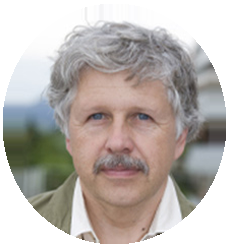


Invited speakers include:
Arkady Zhukov (Ikerbasque, Department of the Polymers and Advanced Materials of the University of Basque Country, Spain)
Markus Gruner (University of Duisburg-Essen, Germany)
Akio Kimura (Hiroshima University, Japan)
Daniel Salazar (BCMaterials, Spain)
Maciej Szczerba (Institute of Metallurgy and Materials Science, Poland)
Jaume Pons (Universitat de les Illes Balears , Spain)
José María Porro Azpiazu (BCMaterials: Basque center for materials, applications &nanostructures. Leioa, Spain)
Xiao Xu (Department of Materials Science, Tohoku University, Sendai, Japan)
Mehmed Acet (Duisburg-Essen University, Germany)
Javier López García (Universidad de Oviedo, Spain)
Abstract IDs:
[1367],[1091],[1127],[1192],[1210],[1238],[1248],[1266],[1278],[1284],[1293]
Advances in Current-Induced Magnetization Control


Sessions Topics Include (but not limited to) :
- Spin-orbit torques
- Spin-transfer torques
- Domain wall/skyrmion devices
- Magnetic tunnel junctions
- Spin-charge interconversion
- Spin and orbital currents
Session Organizer/Moderator
Can Onur Avci


Invited speakers include:
Andrea Grimaldi (University of Messina, Italy)
Kerem Çamsarı (University of California Santa Barbara, USA)
Matthias Althämmer (Walter Meissner Institute, Germany)
Murat Çubukçu (University College London, UK)
Özhan Özatay (Bogazici University, Turkey)
Thomas Moore (University of Leeds, UK)
Tianxiang Nan (Institute of Microelectronics, Tsinghua University, China)
Wanjun Jiang (Tsinghua University, China)
Weisheng Zhao (Beihang University, Fert Beijing Institute, China)
Paolo Perna (IMDEA Nanoscience, Spain)
Frederic Bonell (SPINTEC Grenoble, France)
Aurélien Manchon (Aix-Marseille University, France)
Jiahao Han (Tohoku University, Japan)
Sachin Krishnia (Johannes Gutenberg University of Mainz, Germany)
Kewen Shi (Beihang University China)
Mehmet Onbasli (Koç University, Türkiye)
Aykut Onel (Koç University Türkiye)
Can Onur AVCI (Institute of Materials Science of Barcelona (ICMAB-CSIC) Spain)
Abstract IDs:
[1247],[1249],[1268],[1132],[1172],[1174],[1177],[1187],[1246],[1252],[1257],[1292],[1295],[1336],[1347],[1342]
Superconductivity and Magnetism in Heavy Fermion Systems
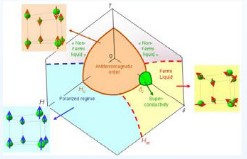

Sessions Topics Include (but not limited to) :
- Heavy Fermion Superconductors
- Low Temperature Superconductors
- Unconventinal Superconductors
- Magnetic Superconductors and Triplet Superconductivity
- The Coexistence of Superconductivity and Magnetism
- Kondo Effect/Systems
- Quantum Critically and Spin Liquids
- Quantum Phase Transition
Session Organizer/Moderator
Daniel Braithwaite – Duygu Yazici




Duygu Yazici is an Advisor to the President of the Scientific and Technological Research Council of Türkiye (TUBİTAK), since 2021. She is also EUREKA High Level Representative of Turkey and a Board Member of the European Open Science Cloud (EOSC). She was a Scientific Officer at the ERC between 2019-2021. She has performed her postdoctoral research in the Physics Department at the University of California, San Diego (UCSD) with Prof. M. Brian Maple, working on materials exhibiting strongly correlated electron phenomena after completing both her Masters’s and Ph.D. degrees in Condensed Matter Physics at Cukurova University. Her research addresses strongly correlated electron phenomena in a novel transition metal, rare earth, and actinide-based oxides and intermetallic compounds.
Invited speakers include:
Shinsaku Kambe (JAEA Tokai, Japan)
Konstantin Semeniuk (MPI Dresden, Germany)
Alexander Eaton (University of Cambridge, UK)
Riku Yamamoto (Los Alamos National Laboratory, USA)
Daniel Braithwaite (Univ. Grenoble Alpes and CEA France)
Andrea Gauzzi (Sorbonne University France)
Abstract IDs:
[1106],[1117],[1152],[1171],[1186],[1216],[1243],[1244]
Superconducting Thin Films and Interface Superconductivity


Sessions Topics Include (but not limited to) :
- Elaboration of superconducting thin films
- Processing of gated hetero-structures
- Proximity effect and related devices
- Metal-insulator-transition
- Film properties
- Interface superconductivity
- Novel devices
Session Organizer/Moderator
Davor Pavuna – Neven Barisic
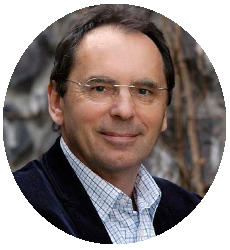





Neven Žitomir Barišić is an associate professor at the Faculty of Science and Mathematics (PMF) of the University of Zagreb and at the Technical University of Vienna (TU Wien), Austria. An exceptionally creative researcher, who gathered and honed his experiences in many recognized world laboratories, went through all the steps in his development to now be recognized as a renowned scientist: from the creation of a doctoral thesis, cooperation with distinguished scientists, the use of numerous experimental techniques necessary for the elucidation of a certain physical problem, to their presentation in publications and numerous lectures around the world.
The focus of his scientific activity today is the search and study of new electronic materials, which are of fundamental scientific importance, but also have great potential for application.
Invited speakers include:
Ruslan Popov (Institute for Technical Physics, Karlsruhe Institute of Technology Germany)
Antonio Badia Majos (Dep. of Condensed Matter Physics, University of Zaragoza Spain)
Wei Ku (Tsung-Dao Lee Institute and Shanghai Jiao Tong University China)
Abstract IDs:
[1049],[1164],[1190],[1223],[1234],[1259]
Frontiers in Magnetization Dynamics and Magnonics


Sessions Topics Include (but not limited to) :
- Magnetization dynamics in antiferromagnets and ferrimagnets
- Nonconventional computing using magnetization dynamics
- High-frequency magnetoelastic dynamics and other spin-wave hybrids.
Session Organizer/Moderator
Farkhad Aliev, Ahmad Awad
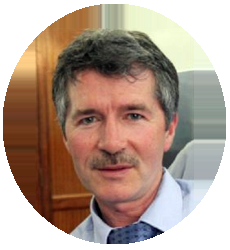



Invited speakers include:
Sebastian Wintz (Helmholtz-Zentrum Berlin, Germany)
Matthias Küss (University of Augsburg, Germany)
Joerg Wunderlich (University of Regensburg, Germany)
Madjid Annane (Unité Mixte de Physique CNRS / Thales / Université Paris Sud, France)
Davi Rodrigues (Politecnico di Bari, Italy)
Andrei Slavin (Oakland University, USA)
Artem Litvinenko (Gothenburg University, Sweden)
Ahmad Awad (Physics Department, University of Gothenburg, Sweden)
Abstract IDs:
[1185],[1078],[1096],[1124],[1151],[1194],[1265],[1267],[1334],[1340],[219]
Superconductivity in Bi-layer Nickelates
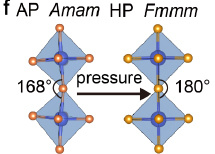

*Image is Courtesy of Meng Wang from publication “Superconductivity near 80 Kelvin in single crystals of La3Ni2O7 under pressure”
Session Topics Include (but not limited to) :
• TBA
Session Organizer/Moderator
Ilya Eremin


Furthermore, He deals with systems that have geometric frustration in addition to low dimensionality and strong electronic correlations.
Invited speakers include:
Ilya Eremin (Ruhr-University Bochum, Germany)
Kazuhiro Kuroki (Osaka University, Japan)
Fu-Chun Zhang (University of Chinese Academy of Sciences, China)
Xingjiang Zhou (National Lab for Superconductivity, Chinese Academy of Sciences, China)
Ariando Ariando (National University of Singapore, Singapore)
Meng Wang (Center for Neutron Science and Technology, Sun Yat-Sen University, China)
Jonathan Pelliciari (Brookhaven National Laboratory USA)
Abstract IDs:
[1063][1139][1379]
HTS Cuprates: Advances in Fundamentals and Experimental Studies
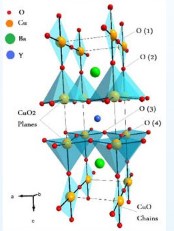

Sessions Topics Include (but not limited to) :
- High-Tc Cuprates
- HTS Superconducting Thin Films,Proximity Effects, and Interface Superconductivity
- Nanoscale, Surface and Interface Superconductivity
- Photoemission and ARPES
- Study of Fermi Surface of HTS by Magnetic Quantum Oscillations
- Superconducting Fluctuations and Related Effects
Session Organizer/Moderator
Ivan Bozovic – Davor Pavuna – Neven Barisic
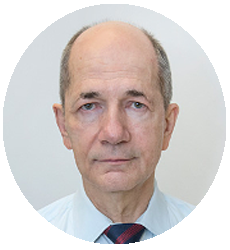

He is a Member of European Academy of Sciences, Foreign Member of the Serbian Academy of Science and Arts, Fellow of APS, and Fellow of SPIE. He received the Bernd Matthias Prize for Superconducting Materials, SPIE Technology Award, the M. Jaric Prize, the BNL Science and Technology Prize, was Max Planck and Van der Waals Lecturer, and was elected two times as a Gordon and Betty Moore Foundation Principal Investigator.
Ivan’s research interests include basic physics of condensed states of matter, novel electronic phenomena including unconventional superconductivity, innovative methods of thin film synthesis and characterization, quantum materials, and nano-scale physics. He has published 11 research monographs and over 300 research papers, including 30 in Science and Nature journals.






The focus of his scientific activity today is the search and study of new electronic materials, which are of fundamental scientific importance, but also have great potential for application.
Invited speakers include:
Roberta Caruso (BNL, USA)
Kazuhiro Fujita (BNL, USA)
Assa Auerbach (Technion – Israel Institute of Technology, Israel)
Annette Bussmann-Holder (Max Planck Stuttgart, Germany)
Carlo Di Castro (Accademia Nazionale dei Lincei, Italy)
Wei Ku (Shanghai Jiao Tong University, China)
Wen Hu (Brookhaven National Laboratory, USA )
Jure Demsar (Institute of Physics Staudingerweg, Johannes Gutenberg-Universität Mainz, Germany)
Neil Harrison (LANL, USA)
Denis Sunko (Department of Physics, Faculty of Science, University of Zagreb,Croatia)
Sergei Mukhin (National University of Science and Technology MISIS, Russia)
Sergei Ovchinnikov (Kirensky Institute of Physics, Federal Research Center KSC SB RAS, Russia)
Juergen Haase (Felix Bloch Institute for Solid State Physics, Leipzig University, Germany)
Michal Šindler (Institute of Physics, Academy of Sciences of the Czech Republic, Czech Republic)
Di-Jing Huang (National Synchrotron Radiation Research Center (NSRRC) Taiwan)
Vincent Oliviero (Laboratoire National des Champs Magnétique Intenses France)
Abstract IDs:
[1005],[1021],[1022],[1024],[1077],[1135],[1221],[1229],[1245],[1274],[1289],[1291],[1330],[1335],[1649]
Molecular Spin Qubits toward Quantum Computer


In this session, we will discuss about the recent progress and perspectives on the molecular spin qubits for quantum computer.
Session Topics Include (but not limited to) :
- Molecular Spintronics
- Single-Molecule Magnets
- Spin Crossover Complexes
- Molecule-Based Magnets
- Molecular Spin Qubits
- High-Density Memory Devices
Session Organizer/Moderator
Masahiro Yamashita


Invited speakers include:
Masahiro Yamashita (Tohoku University, Japan)
Tadahiro Komeda (Tohoku University, Japan)
Stephen Hill (Florida State University, USA)
Toyo Kazu Yamada (Chiba University, Japan)
Yingshuang Fu (Huazhong University of Science and Technology, China)
Nicolas Lorente (Donostia International Physics Center, Spain)
Christoph Wolf (Center for Quantum Nano Science , South Korea)
Stefan Minasian (LBNL, USA)
Fernando Luis (University of Zaragoza, Spain)
Joseph Zadrozny (Colorado State University, USA)
Alexey Popov (IFW Dresden, Germany)
Joris van Slageren (University of Stuttgart, Germany)
Bin Hu (The University of Tennessee, Knoxville, USA)
Talal Mallah (Université Paris-Saclay, France)
Magdalena Fitta (Institute of Nuclear Physics Poland)
Marco Affronte (Universita’ di Modena e Reggio Italy)
Shinya Hayami (Kumamoto University Japan)
Deung-Jang Choi (Centro de Física de Materiales (CSIC-UPV/EHU) Spain)
Abstract IDs:
[1006],[1035],[1055],[1067],[1070],[1212],[1290],[1358],[1378]
Large Scale Applications of Superconductors and Their Fundamental Technologies


Sessions Topics Include (but not limited to) :
• Medical, Scientific and Energy Applications of Superconductors
• Fundamental technologies for large-scale applications of superconductors
• Stability, quench and protection of superconductor magnets
• Ac losses in superconductors
• Various electromagnetic, thermal and mechanical modellings
Session Organizer/Moderator
Arno Godeke – Naoyuki Amemiya
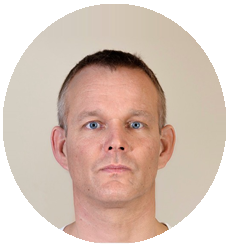



Invited speakers include:
Alex Otto (Solid Material Solutions, USA)
Michael Eisterer (TU Wien, Atominstitut, Austria)
Charlie Sanabria (Commonwealth Fusion Systems, USA)
Sastry Pamidi (FAMU-FSU and the Center for Advanced Power Systems, USA)
Vitaly Vysotsky (Russian Scientific R&D Cable Institute, Russia)
Sandro Rossi (HITRIplus, Italy)
Satoshi Awaji (Insitute for Materials Research, Tohoku University, Japan)
Tayebeh Mousavi (King’s College London United Kingdom)
Andrey Kashcheev (ROSSETI R&D Center Russia)
Takanobu Kiss (Kyushu University Japan)
Eric Forton (IBA – Ion Beam Applications Belgium)
Abstract IDs:
[1382],[1028],[1031],[1034],[1051],[1052],[1053],[1087],[1113],[1145],[1178],[1215],[1304],[1311]
Novel Quantum Magnetism in Low Dimensions


In thi

Session Topics Include (but not limited to) :
- Frustrated Magnetism and Spin Systems
- Quantum Spin Liquids
- Low Dimensional Magnetism
- Novel Developments in Orbital Physics
- Quantum Spin Nematics
- Magnetic van der Waals materials
- Magnetism in Quantum Materials
Session Organizer/Moderator
Alexander Chernyshev, Mike Zhitomirsky




Invited speakers include:
Alexander Chernyshev (University of California, Irvine, USA)
Michael Zhitomirsky (IRIG, CEA-Grenoble, France)
Pavel Maksimov (Joint Institute for Nuclear Research, Dubna, Russia)
Sergey Streltsov (Institute of Metal Physics, Russia)
Alexander Nikolaevich Vasiliev (Moscow State University, Russia)
Frederic Mila (Ecole Polytechnique de Lausanne, Switzerland)
Hao Zeng (University at Buffalo, USA)
Vladislav Kataev (Leibniz Institute of Solid State and Materials Research IFW Dresden, Germany)
Alexander Kurbakov (Petersburg Nuclear Physics Institute Russia)
Alireza Qaiumzadeh (Center for quantum spintronics, Norwegian University of Science and Technology Norway)
Abstract IDs:
[1007],[1010],[1018],[1019],[1057],[1061],[1071],[1081],[1097],[1098],[1144],[1213],[1219],[1251],[1302],[204],[205],[207],[234]
Quantum Information Technology and Applications



Sessions Topics Include (but not limited to) :
- Quantum communication
- Quantum photonics
- Quantum computation
- Quantum optics of atoms, molecules and solids
- Quantum imaging
- Quantum cryptography
Session Organizer/Moderator
Joanna Skiba-Szymanska
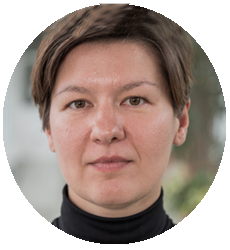

Invited speakers include:
Abstract IDs:
TBA
Twistronics in 2D layers
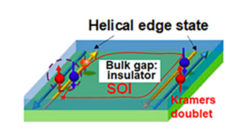

Sessions Topics Include (but not limited to) :
- Topological insulators
- Topological superconductors
- Topological magnetic materials
- Fabrications, theories, physics, and applications
- Magic angle layers and twintronics
- Flat bad phenomena
- vdW spintronics with spin-orbit interaction and torque
- Majorana-fermion-based phenomena and applications
- Topological quantum computation
- High-temperature operation
Session Organizer/Moderator
Junji Haruyama


His main interests are low-dimensional topological-insulating states, spintronics, magnetism, nano-photonics, and superconductivity in 2D atomically thin materials, semiconductors, and carbon nanotubes.
Invited speakers include:
TBA
Abstract IDs:
TBA
Superconducting Motors and Applications in Electrical Engineering


The presentations may also focus on technologies related to the development of superconducting machines, such as pulsed-field magnetization techniques, superconducting wires and tapes, torque tubes, slip rings, cryogenics, and rotating joints.
Any related applications for use in combination with superconducting motors are also welcome in this session such as flux pumps, HTS cables, cryogenic power electronics, HTS dynamos, superconducting bearings, and gears.
Sessions Topics Include (but not limited to) :
- Motors and Generators
- Power Applications of Superconductors
- Power Cables
- Techniques and Instrumentation of Large Scale and Energy Applications
- Numerical Modelling of Superconducting Materials and Applications
- Cryogenic Engineering Modeling
- Instrumentation
Session Organizer/Moderator
Kévin Berger


Kévin Berger is an Associate Professor at the University of Lorraine, Group of Research in Electrical Engineering of Nancy (GREEN), in France since 2010. In 2006, K. Berger obtained his Ph.D. on the modeling of coupled magneto-thermal problems in High-Temperature Superconductors (HTS). Then, he worked for two years at G2ELab and Neel Institute in Grenoble with Prof. Pascal Tixador on the design and realization of an 800 kJ HTS SMES, the first conduction-cooled SMES realized in Europe. After having spent one year in the industry (Exxelia Group) designing magnetic components for aircraft and space applications, he joined the GREEN laboratory, which is involved in the design and study of superconducting applications, in particular superconducting motors. His main research topic concerns the magnetization of HTS bulks by Pulsed Field Magnetization for practical applications such as electrical motors and NMR systems. K. Berger is also interested in the potential in terms of trapped magnetic flux of new bulk materials such as YBCO foams, MgB2, and iron-based superconductors. He is still involved in the development of analytical and numerical tools and is the organizing Committee Chair of the 7th edition of the International Workshop on Numerical Modelling of High-Temperature Superconductors, will be held in Nancy, France, from May 26th to 29th, 2020. http://hts2020.eu/ Berger is currently engaged in two H2020 projects: IMOTHEP related to the “Future propulsion and integration: towards a hybrid/electric aircraft” and SMAGRINET regarding “Smart grid competence hub for boosting research, innovation and educational capacities for energy transition” https://www.smagrinet.eu/. For many years, he is an expert in the TC 90 of the International Electrotechnical Commission (IEC) which prepares International Standards (IS) related to superconducting materials and devices.
Invited speakers include:
Taketsune Nakamura (Kyoto University, Japan)
Hocine Menana (University of Lorraine, Research Group in Electrical Engineering of Nancy (GREEN) France)
Masayoshi Ohya (Kwansei Gakuin University, Japan)
Enric Pardo (Institute of Electrical Engineering, Slovak Academy of Sciences Slovakia)
Abstract IDs:
[1129],[1196],[1276],[1281],[1374]
Recent Progresses in Renewable Energy Technology and Its Implication: Materials Perspectives
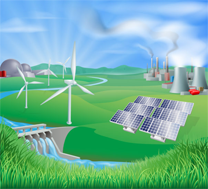

Sessions Topics Include (but not limited to) :
- Techniques and Instrumentation of Large Scale and Energy Applications
- Recent Progresses in Renewable Energy Technology and implications: Materials Perspectives
Session Organizer/Moderator
German F. De la Fuente, Ali Gungor




Invited speakers include:
TBA
Abstract IDs:
TBA
Ferrites and Rare Earth Magnetic Materials


Sessions Topics Include (but not limited to) :
Primary:
- Ferrites and Rare Earth Magnetic Materials
Secondary:
- Magnetic Materials Processing and Physical Properties
- Multiferroics and Magnetic Oxides
Session Organizer/Moderator
Muhammad Anis-ur-Rehman


He has more than two hundred publications, which include publications in impact factor journals, book chapters, and conferences proceedings. He has supervised a number of undergraduate and graduate research theses. He is a recipient of the DRSM Gold medal from Pakistan Academy of Sciences, Pakistan and Young Scientist Award from CSJ, Japan. He has excellent ranking among the scientists in the field and has been awarded Research Productivity Award multiple times by his Institute as well as by Pakistan Council for Science and Technology, Pakistan.
Invited speakers include:
Rizwan Raza (COMSATS University Islamabad Pakistan)
Muhammad Anis-ur-Rehman (COMSATS University Islamabad, Islamabad, Pakistan Pakistan)
Abstract IDs:
[1089],[1090],[1093],[1094],[1109],[1120],[1168],[1183],[1217],[1227],[1228],[1230],[218],[222]
Advances in Thin Films, Multi-Layers and Patterned Nanostructures


The aim of this session is to bring to gather the recent findings from the current research activities and new ideas to be presented to the participants from researchers all around the world during the conference. Hopefully, this will open up good opportunities to spark new ideas in minds for future research efforts.
Sessions Topics Include (but are not limited to) :
- Voltage control of magnetism
- Thin Films, Nanoparticles, and Micro/Nanostructures
- Functional Oxide Thin Films
- Nanomechanical characterization of materials
- The magnetism of Nanoparticles, Nanowires, and Nanostructures
- Magnetoelectric and Multiferroic materials
- Spin Transport in Nanoscale Structures
- Spin current-induced magnetization dynamics
Session Organizer/Moderator
Mustafa Ozturk, Erdem Demirci
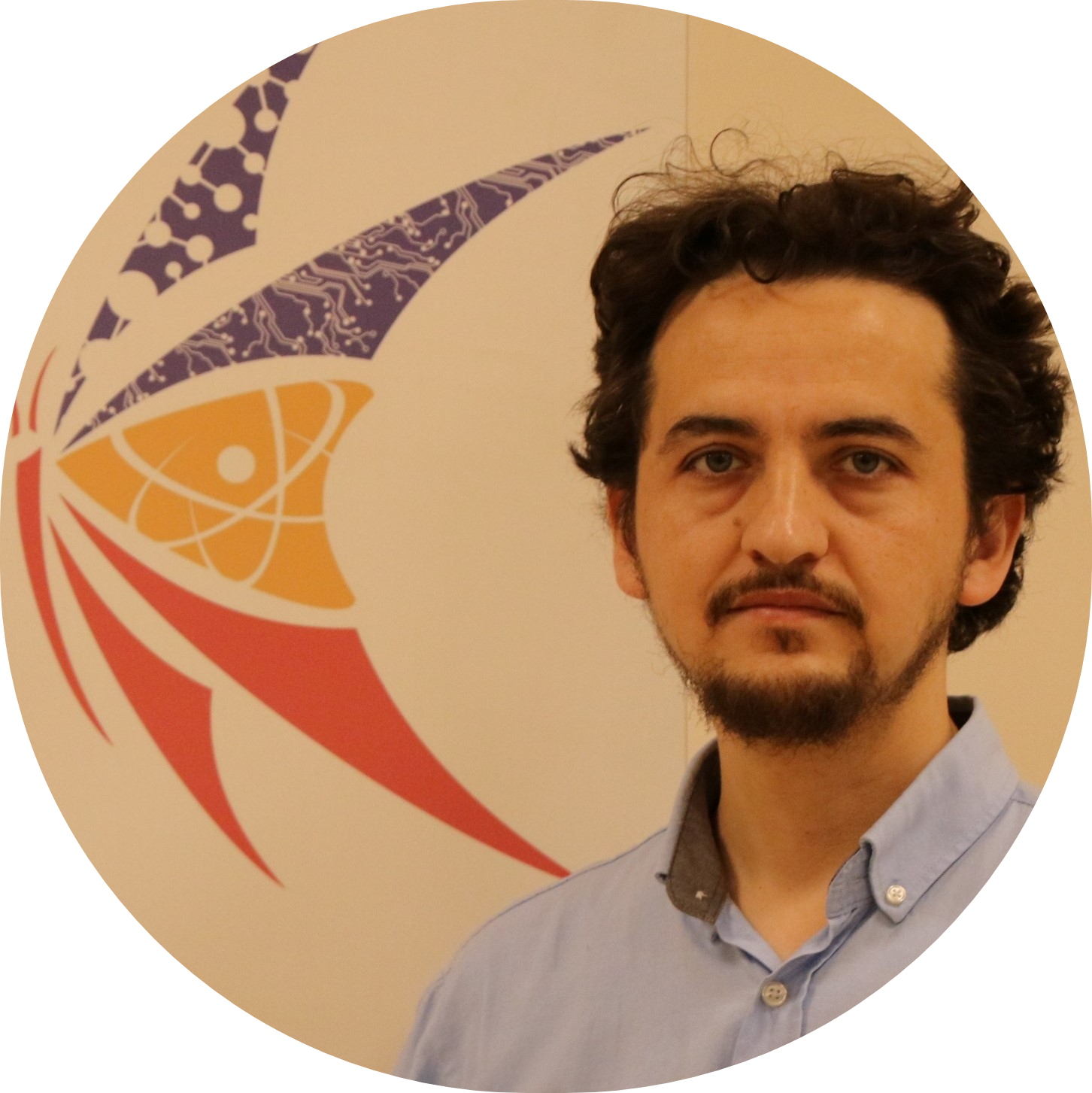



Dr. Erdem Demirci is an instructor in Applied Physics, and he is physicist from Gebze Technical University. He received his PhD Degree in Physics from Gebze Technical University (Turkey) in 2016. Between 2016-2017, he worked as a postdoc on graphene production and spin filter for 2 years at Istanbul Medeniyet University. In 2020, he spent 1 year on voltage control of magnetism at Universitat de Barcelona. Currently, he is working on voltage control of magnetism in magnetostrictive-piezoelectric hybrid materials for energy-efficient spintronic devices at Gebze Technical University. He has experience in magnetron sputtering deposition, micro/nano fabrication techniques for magnetic sensors, optical lithography, single layer graphene production, magneto-optic Kerr effect (MOKE), and magneto-transport properties.
Invited speakers include:
Michał Grzybowski (University of Warsaw, Faculty of Physics, Poland)
Abstract IDs :
[1032],[1040],[1287],[1270]
Spintronics Materials-Devices and Applications
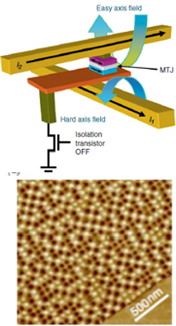

Session Topics Include (but not limited to) :
• Spintronic Devices utilizing perpendicular anisotropy magnetic films
• Spin Torque/ Spin Orbit Torque Devices
• Micromagnetic Studies of Spintronic Devices
• Spintronic Devices- Memory and Sensor Applications
• Spin logic devices
Session Organizer/Moderator
Mürsel Alper
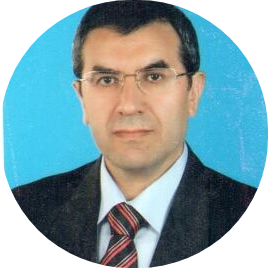

Invited speakers include:
Sabri Koraltan (Physics of functional materials, University of Vienna Austria)
Abstract IDs:
[1136],[1218],[1231]
Graphene and 2D Materials – Theory Session
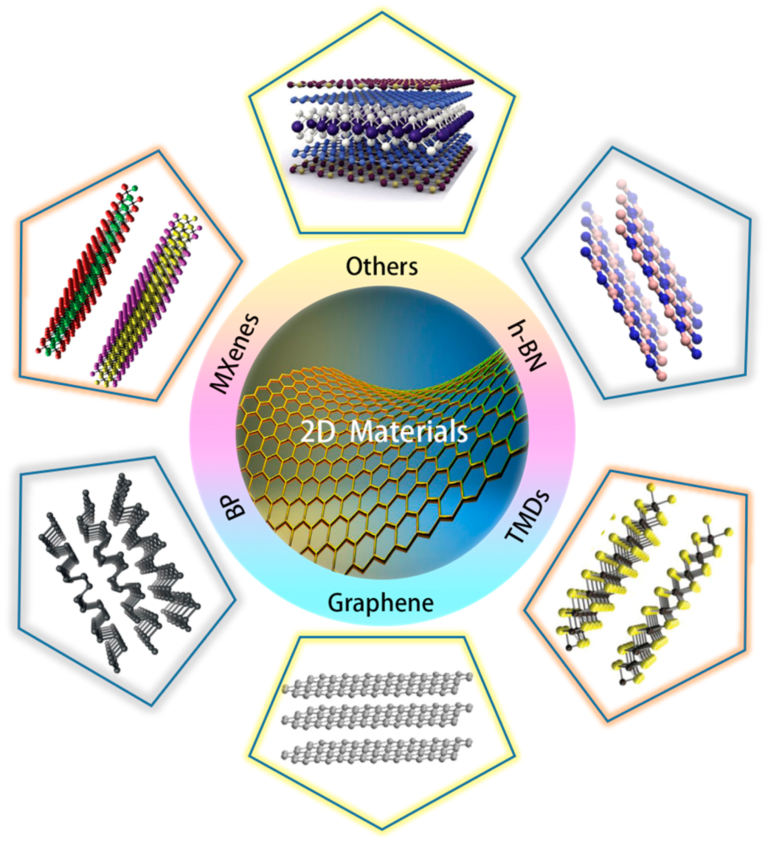

These materials offer new possibilities which include improved control of the electronic and optical properties, manipulation of spin degrees of freedom and confinement of excitons.
They have topological properties that are important in electronic applications such as field-effect transistors, photovoltaic devices, and bio-sensor.
In this session, the theoretical aspects of graphene and other new families of 2D materials will be discussed.
Current knowledge on the physical properties of graphene and related 2D crystals will be expanded by various computational approaches and the modeling of the electronic structure.
In particular important issues such as the dependence of the energy gap on thickness and strain, the multi-orbital character of the electronic state and the effect of the strong spin-orbit coupling will be investigated through various theoretical approaches.
This session will contribute to a better understanding of the intense activity taking place in these atomically thin 2D crystalline solids.
It is also hoped that some new possibilities with these materials will be put forward.
Sessions Topics Include (but not limited to) :
• Graphene : Fundamentals and Mechanisms
Session Organizer/Moderator
Oguz Gulseren
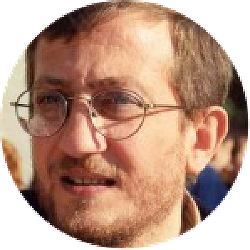

His research areas are theoretical solid-state physics, nanoscience, metal nanowires, carbon nanotubes, phonons and vibrational spectrum, electronic structure of solids, materials properties from the first principle.
Invited speakers include:
Mustafa Polat (İzmir Institute of Technology/Materials Science and Engineering Department Türkiye)
Abstract IDs:
[1200],[1327],[213]
Nanocomposites: Properties and Applications
Crucial enhancements in functional and physical properties are achieved by implementing composite materials on the nanoscale. These improvements have driven the industrial research strategy to more advanced high-end applications. These applications include permanent magnets, biosensors, catalysis, storage media, supercapacitors, solar cells, drug delivery, magnetic resonance imaging, magnetic refrigeration, and microwave devices. This session presents an overview of existing and new pathways for the development of the next generation of application-targeted nanocomposites.
Session Topics Include (but not limited to) :
• Nano-magnetic materials
• Oxide-ferrite nanocomposites
• Hard-soft nanocomposites
• Magnetic Exchange effect
• Dielectric materials
• Permanent magnets
• Photocatalysts
• Water treatment
• Antibacterial
Session Organizer/Moderator
Ramadan Awad


Professor Ramadan Awad completed his Ph.D. as a channel system between Alexandria University (Egypt) and Genoa University (Italy) in 1997. He worked in the field of high-temperature superconductivity Mercury – Thallium Cuprates. He was awarded the professor degree in 2007. Prof. Awad worked as a director of the computer center at the Faculty of Science (Alexandria University) from 2011 to 2012. Currently, he is the Chairman of the Physics Department and the Dean of the Faculty of Science at Beirut Arab University (Lebanon).
His research interests are:
• Electrical and Magnetic Properties of Solids
• Superconductivity
• Nano-materials preparation
• Mechanical Properties of Solids
• Magnetic Properties of Nano-ferrite
• Composite materials
• Permanent magnets
• Photocatalysts
• Water treatment
He has more than 200 publications in the field of superconductivity and Nano Science.
Invited speakers include:
Mahmoud Khalil (Faculty of Science, Beirut Arab University Lebanon)
Ramadan Awad (Department of Physics, Faculty of Science, Alexandria University, Alexandria, Egypt)
Abstract IDs:
[1014]
Applications of Quantum-Flux-Parametron Circuits
In the last decade, the classical superconductor electronics is moving towards quantum electronics. Deterministic classical circuits based on superconductors. The field is very active and begins to mature. In this session, we aim to bring together a group of prominent leading researchers with students, postdoctoral researchers and other participants to discuss the latest experimental and theoretical developments in superconductor electronics based on Josephson junctions. The technical focus of the session is the adiabatic quantum flux parametron, the related theory, the circuit implementations, applications and the interface to quantum electronics.
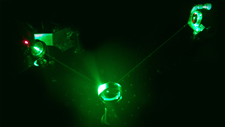







Sessions Topics Include (but not limited to) :
• Josephson junction electronics
• Adiabatic quantum flux parametron
• Switching energy and delay
• AQFP circuit implementations
• Combinations of superconducting Qubits and AQFP circuits
Session Organizer/Moderator
Thomas Ortlepp


Prof. Dr. Thomas Ortlepp studied mathematics at the Technical University of Ilmenau and received his PhD in quantum electronics in 2004. After that, Thomas Ortlepp did research in the field of low-temperature physics at the University of Twente in Holland. In 2010, Thomas Ortlepp habilitated in the field of microelectronics and subsequently took over the leadership of an industrial project for high-performance quantum memory circuits at the University of California in Berkeley.
In 2013, Thomas Ortlepp returned to Germany and started his career at CiS Forschungsinstitut für Mikrosensorik GmbH. In 2015, he was appointed Distinguished Professor by Yokohama National University.
Also in 2015, Thomas Ortlepp took over the management of the CiS Research Institute (CiS Forschungsinstitut für Mikrosensorik GmbH) until today. He is co-founder and vice president of the MEMS Smart Sensor Institute in Nanjing, China, which was established in 2018.
His research focuses on the development of silicon microsystems (MEMS and MOEMS) and the industrial application of quantum technology.
Invited speakers include:
TBA
Abstract IDs:
TBA
Unconventional Superconductivity, and Tunable Quantum States


Sessions Topics Include (but not limited to) :
• Unconventional Superconductors
• Quantum Fluctuations and Tunable Quantum States
• Frusrated Magnetism and Spin Systems
• Quantum Criticality and Spin Liquids
Session Organizer/Moderator
Toni Shiroka


Invited speakers include:
Yi Zhou (Chinese Academy of Sciences, Institute of Physics, China)
Toni Shiroka (Laboratorium für Festkörperphysik ETH, Switzerland)
Shingo Yonezawa (Department of Electronic Science and Engineering, Graduate School of Engineerin, Kyoto University, Japan)
Jong-Soo Rhyee (Kyung Hee University South Korea)
Abstract IDs:
[1009],[1066],[1100],[1263]
Magnet Science and Technology


Sessions Topics Include (but not limited to) :
• Large scale superconducting applications for the high energy physics
• HTS Magnets for the Commercialization
• Design and Construction of the First Industrial Scale Quadrupole Magnet in Turkey
Session Organizer/Moderator
Vyachelav Klyukhin
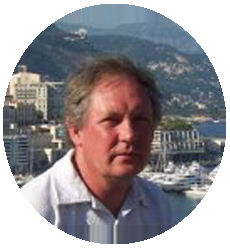

Invited speakers include:
TBA
Abstract IDs:
TBA
Cryogenics Materials, Engineering and Applications
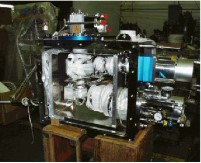

Sessions Topics Include (but not limited to) :
- Advances in Cryogenic Materials and Cryogenic Engineer
- Cryogenic Engineer Modeling
- Cryogenic Power Cables and Leads
- Cryogenic- Cryocoolers
- Cryogenic- Electronics
- Cryogenic-Large Facility and Testing
- Cryogenic-Refrigeration and Liquefaction
- Hydrogen Cryomagnetics
- Innovative Cooling Systems
- Instrumentation
- Materials testing and Evaluation
Session Organizer/Moderator
Yasuharu Kamioka
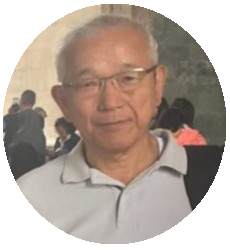

Adjunct Researcher; Waseda University
Fellow Cryogenic and Superconductivity Society of Japan
President; Japan Industrial Society of Cryogenics and Superconductivity
Ph.D. from the University of Tokyo in 1984
Joined with Toyo Sanso Co. Ltd. In 1972 R&D in cryogenic engineering
Was a visiting researcher at UCLA
Was a visiting professor o Research Center for Materials Science at Extreme Conditions, Osaka University and a lecturer of Sophia University
Was a general manager of Cryogenics Department, a corporate officer of Tokyo Nippon Sanso Corporation
He has about 40 patents and more than 70 papers in cryogenics.
Invited speakers include:
TBA
Abstract IDs:
[1037],[1275],[210]
Quantum spin and magnetism in chiral materials: CISS effect, solitons and skyrmions


Session Topics Include (but not limited to) :
- Magnetic Skyrmions and Chiral Magnetism
- Chiral Induced Spin Selectivity (CISS) effect
- Magnetic Vortex Dynamics
- Quantum Phase Transitions
- Theory of Magnetism
- Topological Insulators and Superconductors
- Topological Quantum Matter
- Magnetic Phase Transitions
- Spintronics – Devices and Applications
- Functional Magnetic Materials and Applications
- Magnetic Vortex measurements
Session Organizer/Moderator
Javier Campo & Jun Kishine



His scientific interest is focused on the study of “Magnetic Chirality” and “Purely organic magnets” by using neutron scattering techniques and recently he started to work on “in operando studies of materials for energy applications” by using also neutron scattering. He has held several international membership, among others; vice-presidency of the European Neutron Scattering Association (ENSA), Spanish delegate at the ILL Steering Committee, Chair of the VI European Conference on Neutron Scattering, and Chair of the Spanish Committee for Large Scale Research Facilities.


Invited speakers include:
Victor Ukleev (Helmholtz-Zentrum Berlin, Germany)
Shizeng Lin (Los Alamos National Laboratory, United States)
Sergey V. Grigoriev (PNPI, Saint-Petersburg State University, Russia)
Yusuke Kato (University of Tokyo, Japan)
Shigeo Ohara (Nagoya Institute of Technology, NITECH, Japan)
Mustafa Eginligil (Institute of Advanced Materials,Nanjing Tech University, China)
Jun Kishine (Open University of Japan, Japan)
Masahito Mochizuki (Waseda University Japan)
Emile Fourneau (Experimental Physics of Nanostructured Materials, Q-MAT, CESAM, Université de Liège Belgium)
Abstract IDs:
[1013],[1015],[1016],[1095],[214]
Topological Quantum Matter


Session Topics Include (but not limited to) :
- Topological insulators and superconductors
- Quantum effects due to the topology of physical space
- Topological quantum phase transitions
- Topological nature of the charge confinement
- Topological phases in Josephson junction arrays
- Topological features of the spontaneous Hall effect
- Topological properties of bilayer graphene
- Effective space curvature and gauge fields
Session Organizer/Moderator
Valerii Vinokur


Invited speakers include:
Kun Yang (Florida State University USA)
Zidan Wang (The University of Hong Kong Hong Kong)
Alexey Mironov (Terra Quantum AG Switzerland)
Abstract IDs:
[1027],[206],[226],[225]
Magnetic Materials Processing and Physical Properties


- Casting, forming and machining
- Additive processing and joining technologies
- The evolution of material properties under the specific conditions met in manufacturing processes
- Surface properties
Design and behavior of equipment and tools for the sample preparation and appropriate quantitative analysis with well designed experiments well covered in the session, which contribute significant new transferable knowledge in the form of (a) an innovation or (b) a new insight into material processing in the form of a transferable qualitative or quantitative explanation of a difference between experimental measurements and the predictions of relevant existing theories, models and hypothesis.
Session Topics Include (but not limited to) :
- TBA
Session Organizer/Moderator
Mehmet Ali Aksan
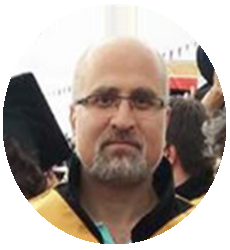

Invited speakers include:
Ahmet Ekicibil (Cukurova University Türkiye)
Cristina Bartha (National Institute of Materials Physics Romania)
Abstract IDs:
[1004],[1008],[1050],[1054],[1288]
Magnetic Recording, Sensors and Microwave Devices
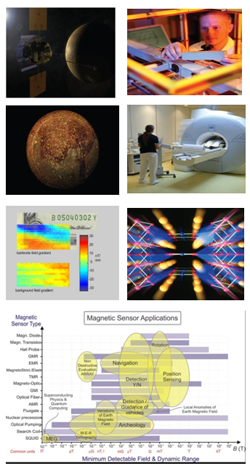

The most recent tools and ways of magnetic recording and reading with increased capacity of data storage, studies on magnetic imaging methods (e.g. low-field open NMR) and up to date developments on the electronic background, instrumentation and measurements in the field are specifically encouraged for presentation in this session.
The session additionally will cover spintronics devices (magnetic tunnel junctions, GMR devices, spin injection/detection in semiconductors, spin LEDs, optical isolators and optical switches), circuit applications (nonvolatile memory and logic), quantum information processing utilizing spin states, spin transfer torque dynamics and applications (e.g. Spin-transfer torque random-access memory (STT-RAM)).
You are kindly invited to join these fruitful discussions.
Session Topics Include (but not limited to) :
• Magnetic imaging and recording ( from spintronic devices to MRI, MFM, magnetooptics, etc., to magnetic shielding and noise measurements)
• Magnetic sensors and applications (GMI, GMR, Fluxgate, Search coil, Hall effect magnetometers, etc., measurement and instrumentations techniques)
• Space magnetometry and magnetic navigation systems
• Magnetic microwave devices (spin transfer torque, switching, oscillator, applications to magnetic sensors and magnetic random access memory, spin Hall Effect devices, etc.)
Session Organizer/Moderator
Peter Švec, Ugur Topal


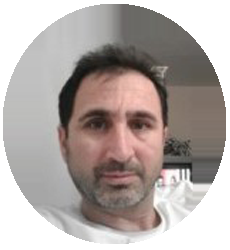

Invited speakers include:
Abstract IDs:
TBA
Superconducting, Magnetic, Topological Arsenides and Tellurides
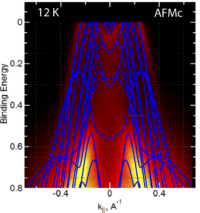



Session Topics Include (but not limited to) :
• Magnetically ordered topological insulators and semimetals
• Magnetically ordered superconductors
• Interplay of superconducting pairing and magnetic ordering
• Charge transport in the AFM-ordered topological materials
Session Organizer/Moderator
Vladimir Pudalov


Invited speakers include:
Tatiana E. Kuzmicheva (Lebedev Physical Institute, Russian Academy of Sciences, Russia )
Pavel D. Grigoriev (L.D. Landau Institute for Theoretical Physics RAS, Russia )
Nikita S. Pavlov (Institute for Electrophysics, Russian Academy of Sciences, Russia )
Alena Yu. Degtyarenko (Lebedev Physical Institute, Russian Academy of Sciences, Russia)
Igor Morozov (Moscow State University, Department of Chemistry Russia)
Abstract IDs:
[1191],[1198],[1225],[1261]
Graphene and 2D Materials (2DM) – Experimental Session


Session Topics Include (but not limited to) :
- Fundamental experimental research on Graphene and 2DM
- Defect structures in Graphene and 2DM
- Spectroscopic characterization of Graphene and 2DM
- Graphene and 2DM based device fabrication Superconductivity in Graphene and 2DM
Session Organizer/Moderator
Emre Erdem


Invited speakers include:
Göknur Cambaz (TOBB University of Economics and Technology, Türkiye)
Abstract IDs:
[1298],[230]
Machine Learning (ML) and Artificial Intelligence(AI) with ab initio calculations



Session Topics Include (but not limited to) :
- TBA
Session Organizer/Moderator
Matt Probert
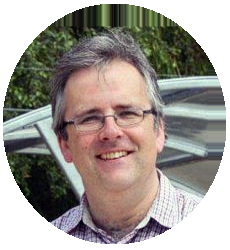

Invited speakers include:
Abstract IDs:
TBA
High Temperature Superconductors for fusion applications
The key enabling technology for the development of compact fusion reactor is that of High-Temperature Superconducting (HTS) tapes, which can generate the high magnetic fields necessary for the development of compact fusion reactors.
However, the development of these materials is far from complete, and several challenges are still to be faced, in particular:
– technology of HTS cables and magnets for fusion
– HTS thermal stability and quenching under fusion conditions
– fusion radiation environment effects on HTS properties
In this session, speakers will focus on the topics above, providing a comprehensive picture of the paths that can be followed to optimize these materials and their use, in order to achieve the production of energy from fusion reactions.
Session Topics Include (but not limited to) :
- HTS technology
- Irradiation effects
- Fusion magnets
Session Organizer/Moderator
Daniele Torsello, Francesco Laviano, Giuseppe Celentano






Invited speakers include:
Daniele Torsello (Politecnico di Torino, Italy)
Giuseppe Celentano (ENEA, Italy)
Sergey Lee (Faraday Factory Japan LLC, Japan)
Nicolò Riva (Proxima Fusion, Germany)
Raphael Unterrainer (TU Wien Atominstitut, Austria)
Chao Zhou (Institute of Plasma Physics, Chinese Academy of Sciences, China)
David Fischer (Massachusetts Institute of Technology, USA)
Naoyuki Amemiya (Kyoto University, Japan)
Abstract IDs:
[1153],[1159],[1178],[1309],[1312],[1316],[1321],[1323]
Iron Based Superconductors (IBS): Fundamental and Applied Research under Ambient and Applied Pressures
Iron-based superconductors (IBS) offer an excellent material platform for conducting basic and practical research. The highest transition temperature (Tc) of 58 K, high upper critical field (Hc2) of ~100 T, and high critical current density (Jc) of 107-108 A/cm2 have been reported for IBS. More than 100 compounds belong to this high-Tc superconductor that can be categorized into six families based on the structure of the parent compounds: REFeAsO (RE1111; RE = rare earth), AFe2As2 (122; A = Ba, K, Ca), (Li/Na)FeAs (111), AEAFe4As4 (1144; AE = Ca, Eu; A = K, Rb), thick perovskite-type oxide blocking layers, such as Sr4V2O6Fe2As2 (22456), Sr4Sc2O6Fe2P2 (42622), etc., and chalcogenide FeX representing 11 (X = chalcogenide). The 1111 and 1144 families are the two most significant families of IBS, which offer high Tc of 58 and 36 K with (as a doped system) and without doping (as a stoichiometric system), respectively. After 15 years of discovery, there are still many challenges with these high Tc IBS materials. This session focuses on two main themes of discussion: 1) Current exciting investigations and findings for IBS regarding the physical, structural, thermodynamic and magnetic properties from characterization measurements as well as the material properties aspects 2) Study and comprehend the high-pressure effects on the growth, electronic structure, electron-phonon interaction and superconducting characteristics of IBS and its development under extreme conditions.
Session Topics Include (but not limited to) :
- Growth process of IBS at ambient and applied pressure: Polycrystalline, single crystal, and thin films
- Current progress and exciting research results of IBS
- Flux pinning, grain boundaries, and critical current properties in extreme conditions with pressure and strain
- Fabrication of bulks, wires, and tapes under ambient and high-pressure conditions
- Fabrication of bulk and investigation of the trapped magnetic field
Session Organizer/Moderator
Shiv Singh


Invited speakers include:
Bernd Büchner (IFW Dresden, Germany)
Cedomir Petrovic (Shanghai Advanced Research in Physical Sciences, China)
Hiraku Ogino (National Institute of Advanced Industrial Science and Technology (AIST), Japan)
Adrian Crisan (National Institute for Materials Physics, Romania)
Zhixiang Shi (Southeast University China)
Shiv Singh (Institute of High Pressure Physics Warsaw, Poland)
Abstract IDs:
[1383],[1076],[1023],[1030],[1193],[1199],[1209],[1301],[1310]
Role of Superconductivity Roadmap For Net Zero Carbon Emission Targets by 2050: Superconductivity Global Alliance (ScGA)


This session will focus on presenting the status of the development of superconducting solutions to address the net zero carbon emission targets by 2050. The presentations will include a panel discussion on the ScGA status on grand challenges and the proposed strategic roadmaps and will include invited talks on superconducting technologies for Fusion, Renewables, Transmission Lines, Storage, and Transport and related technologies as well as the role of hydrogen together with superconductors in addressing selected challenges.
Session Topics Include (but not limited to) :
- Superconducting Magnet Applications for Fusion Reactors
- Advances in Superconductor Generators for Wind Turbines
- Superconducting Transmission Lines
- Superconducting Magnetic Energy Storage (SMES)
- Fault Current Limiters in Renewables
- Superconductor Applications for Aviation
- Superconducting Maglev Applications
- Magnetic Separation for Materials in Water Purification
- Superconductor Applications for Hydrogen as a Fuel and Coolant
Session Organizer/Moderator
Ziad Melhem
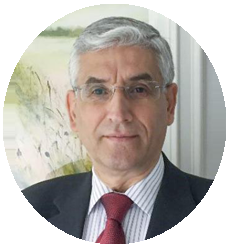

Ziad has over 34 years of experience in product, partnerships, alliances, and business development activities in applied superconductivity, Low and High-temperature superconducting (LTS & HTS) materials, cryogenics, advanced instrumentation, quantum, and nanotechnology applications for scientific, medical, physical and life sciences, energy, and industrial sectors.
Ziad is the Chairman of the British Cryogenic Council (BCC), a member of the IOP Superconductivity Group, a Chairman of the IOP Superconductivity Summer School series in Oxford, a Member of the International Organizing Committee of the Magnet Technology Conference series, and Coordinator of the Superconductivity Global Alliance (ScGA). Ziad is active at the national and international levels and is a member of a variety of international and national committees and organizations and sits on Advisory Boards for different projects and initiatives on superconducting, quantum, and cryogenic applications.
Invited speakers include:
Sastry Pamidi (FAMU-FSU College of Engineering, Florida, USA)
Xiaoze Pei (University of Bath, UK)
Kohei Higashikawa (Kyushu University, Japan)
Hiroyuki Ohsaki (University of Tokyo, Graduate School of Frontier Sciences, Kashiwa 277-8561, Japan)
Marco Breschi (University of Bologna, Italy)
Sasha Ishmael (VEIR Inc., 01801, Woburn, United States of America )
Hongye Zhang (School of Engineering, University of Edinburgh, Edinburgh, UK)
Takanobu Kiss (Kyushu University, Japan)
Ziad Melhem (Oxford Quantum Solutions Ltd United Kingdom)
Abstract IDs:
TBA
Quantum Transport and Novel Broken Symmetry Ground States
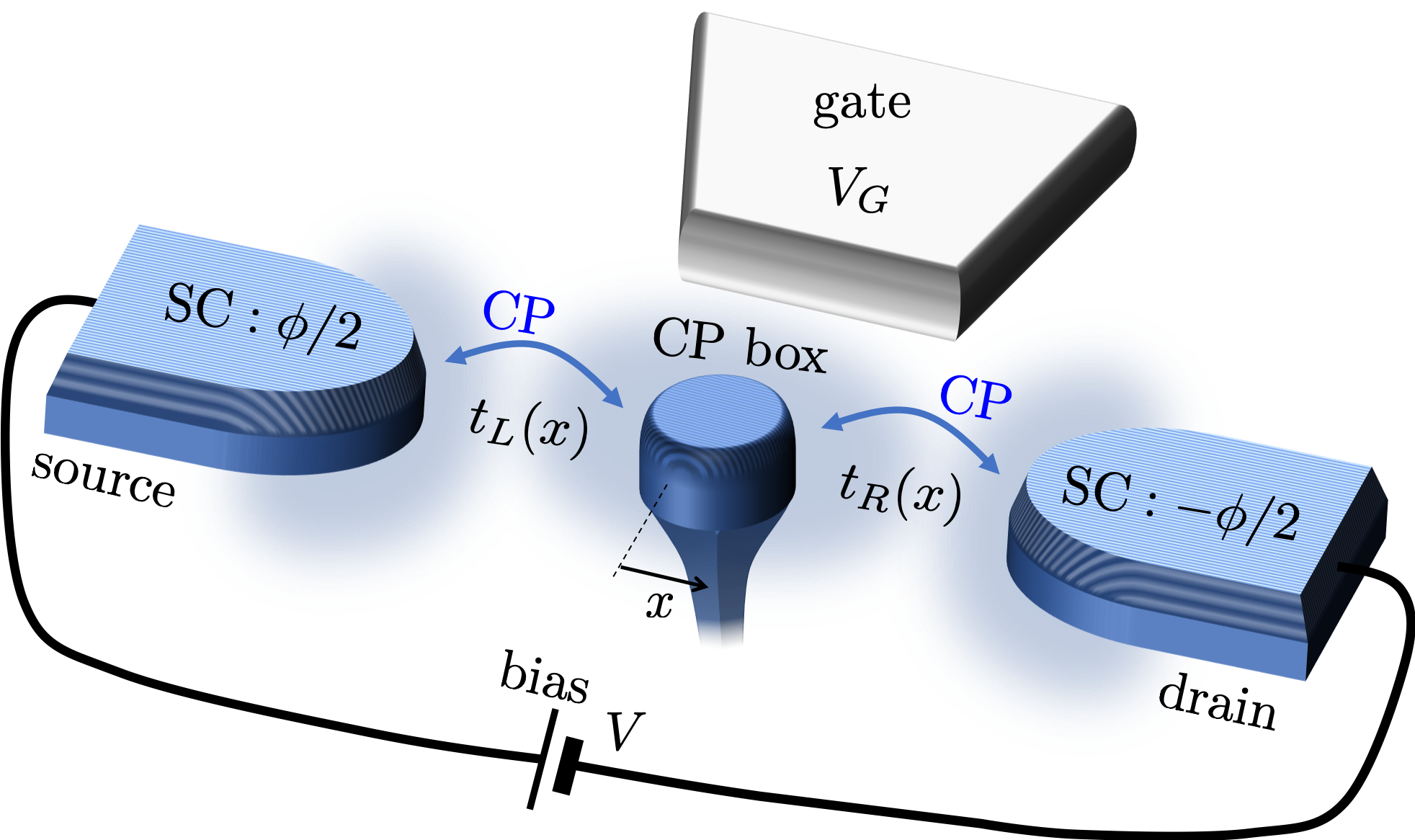

The other aspect of quantum transport we focus on is realized in heterostructures of different types. Among them we single out just few examples: different types of normal and superconducting mesoscopic weak links, interfaces between systems in different ground states and/or topology, manipulation of collective modes in heterostructures, etc.
Session Topics Include (but not limited to) :
- Extended Drude model and memory function
- Optical- and magneto-conductivity
- Dirac and Weyl semimetals
- Topological materials and their junctions
- Exotic and topological superconductivity
- Charge ordering in quasi-2D systems with closed Fermi surface
- Normal, magnetic and superconducting mesoscopic heterostructures
- Nanoelectromechanical weak links
Session Organizer/Moderator
Danko Radić – Zoran Rukelj




Invited speakers include:
Igor Herbut (Simon Fraser University, Canada)
Dino Novko (Institute of Physics, Zagreb, Croatia)
Damjan Pelc (University of Zagreb Faculty of Science, Zagreb, Croatia)
Xi Dai (The Hong Kong University of Science and Technology, China)
Hee Chul Park (Department of Physics, Pukyong National University, Busan, 48513, Republic of Korea)
Antonio Strkalj (University of Zagreb Faculty of Science, Zagreb, Croatia)
Nina Marković (Goucher College, Baltimore, MD, USA)
Junho Suh (Department of Physics, Pohang University of Science and Technology, Pohang 37673, Republic of Korea)
Vito Despoja (Institute of Physics, Zagreb, Croatia)
Ivan Kupčić (Department of Physics, University of Zagreb Croatia)
Zoran Rukelj (Department of Physics, University of Zagreb, Faculty of Science Croatia)
Danko Radić (Department of Physics, Faculty of Science, University of Zagreb Croatia)
Abstract IDs:
[1371],[1026],[1241],[1242],[1355],[1359],[1371],[240]
Advanced REBCO-based conductors for large-scale HTS applications
High-performance, low-cost, high-temperature superconducting (HTS) REBCO tapes or coated conductors have the potential to revolutionize many energy-related applications and could have major implications in the energy transition towards clean and renewable energy generation, storage, transmission and use in large-scale electric devices. These coated conductors are enabling for applications such as commercial nuclear fusion, superconducting cables for the electric grid, electric aviation, and superconductor-based electric generators/motors, etc. This symposium or focused session will highlight talks from leading REBCO wire manufacturers and focus on REBCO wire performance in applied magnetic fields, cost, thruput, yield, etc.
Session Topics Include (but not limited to) :
• TBA
Session Organizer/Moderator
Amit Goyal


He is a member of the National Materials and Manufacturing Board of the US National Academies. He is also presently an Emeritus Corporate Fellow at the Oak Ridge National Laboratory. Goyal was previously a UT-Battelle Corporate Fellow, a Battelle Distinguished Inventor and an ORNL Distinguished Scientist at Oak Ridge National Laboratories in Tennessee. He was also the chair of the UT-Battelle-ORNL Corporate Fellow Council.
Invited speakers include:
Alexander Molodyk (Faraday Factory, Japan)
Yasuhiro Iijima (Fujikura Ltd. Japan)
Venkat Selvamanickam (The University of Houston, USA)
Yutaka Yamada (Shanghai Superconductor Technology Co., Ltd, , China)
Daniel McGahn (American Superconductor Corporation AMSC, USA)
Laurent Pilon (Advanced Research Projects Agency-Energy (ARPA‑E) HTS Wire Program (DOE-ARPA-E), USA)
Takanobu Kiss (Kyushu University Japan)
Ashleigh Francis (Commonwealth Fusion Systems USA)
Hunju Lee (SuNAM Co., Ltd. South Korea)
Abstract IDs:
TBA
Magnetism of Nanoparticles, Nano-Wires and Nano-Structures
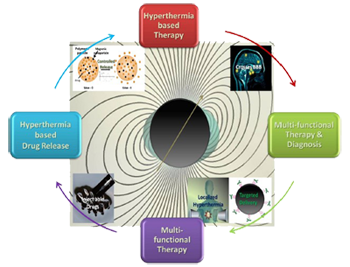

Session Topics Include (but not limited to) :
• Synthesis and Characterization of Magnetic Nanomaterials
• Magnetic Properties
• Biomedical Applications
• Energy and Technological Applications of Magnetic Nanomaterials
Session Organizer/Moderator
Hakan Köckar
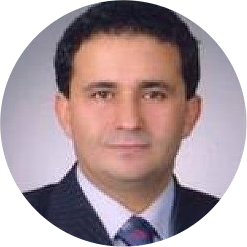

Details about his research activities can be found here;
http://w3.balikesir.edu.tr/~nanomanyetizma/index_dosyalar/Page435.html
Invited speakers include:
Abstract IDs:
[1319],[1351]
Numerical Modelling of Superconducting Materials and Applications


[1] HTS Modelling Workgroup http://www.htsmodelling.com/
Sessions Topics Include (but not limited to) :
- Numerical Modeling on Superconductor
- Bulk Superconductors
- Coated Conductors
- High-Tc Cuprates
- Thermal , Magnetic and Electrical Properties of Superconductors
- AC losses in superconductors
- Power Applications of Superconductors
- Power Cables
- Superconductor Fault Current Limiters: Principles and Practice
- Cryogenic Engineering Modelling
Session Organizer/Moderator
Min Zhang


Invited speakers include:
TBA
Abstract IDs:
TBA
Fe-Based Superconductors: Growth and Properties Relevant to Applications
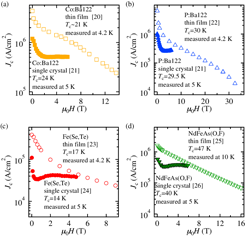

Sessions Topics Include (but not limited to) :
- Processing of pnictide single crystals, thin films and bulk superconductors
- Grain boundary issues for pnictide
- Improvement of critical current properties by introduction of pinning for pnictide
- Applications of pnictide bulks, including trapped field magnets
Session Organizer/Moderator
Iida Kazumasa
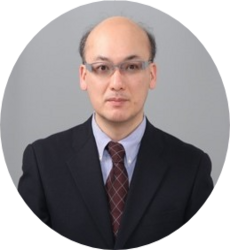

Invited speakers include:
TBA
Abstract IDs:
TBA
This session has been merged with “Superconductivity and Magnetism in Heavy Fermion Systems” session!
Novel Phases in Strongly Correlated Electron Systems


Sessions Topics Include (but not limited to) :
• Heavy fermion
• Unconventional superconductivity
• Quantum phase transiton
• Topological Kondo physics
• New Materials
Session Organizer/Moderator
Tuson Park
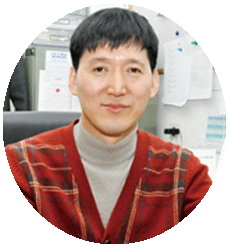

2013-present: Director of the Center for Quantum Materials and Superconductivity Sungkyunkwan University, Korea
2008-present: Professor, Department of Physics, Sungkyunkwan University, Korea
2016- present: Fellow of Korean Physical Society
Invited speakers include:
Emil Bozin (Brookhaven National Laboratory USA)
Dmitri Efremov (IFW Dresden Germany)
Diego Zocco (Vienna University of Technology (TU Wien) Austria)
Abstract IDs:
[1082],[1352],[229]
Theory of Magnetism


Session Topics Include (but not limited to) :
- Theory of Magnetism
- First Principles
- Ab Initio Calculations
Session Organizer/Moderator
Ali Zaoui


Invited speakers include:
Izumi Hase National (Institute of Advanced Industrial Science and Technology(AIST), Japan)
Abstract IDs:
[1083],[1160],[1294],[215]
Quantum Functional Materials and Their Emerging Technologies




The progress made in condensed matter physics during the last two decades leads to discovery principally new phenomena and engineering of advanced functional materials which may play a crucial role in the developments in modern science and technology. Especially, this concerns a relatively new area, quantum technology which is based on the use of quantum phenomena in the functionalization of advanced nanoscale materials. It is commonly believed that low-dimensional quantum functional materials such as graphene, topological insulators, novel superconductors, quantum sensors, and quantum spin liquids may replace in near future traditional ones in electronic, optical and mechanical devices by increasing their energy- and resource-saving efficiency, durability, making them maximally compact, flexible and environmentally safe. Unusual properties of these materials make possible realization and practical utilization of new quantum phenomena related to underlying fundamental phenomena such as topological effects, relativistic-like behavior (in graphene and Majorana fermions), disorder and coherence effects, quantum transport, etc. Fabrication of new materials and devices requires the study of such effects and tuning of the physical properties of these materials.
Sessions Topics Include (but not limited to) :
• Dirac and Weyl semimetals
• Topological Insulators
• Graphene and other 2D materials
• Majorana fermions
• Kitaev chains
• Topological superconductors
• Quantum metrology
• Quantum networks
• Physics infiormed machine learning
Session Organizer/Moderator
Davron Matrasulov


Invited speakers include:
TBA
Abstract IDs:
TBA
Quantum Error Mitigation
Current quantum hardware for information processing is prone to errors, limiting the complexity of computations that can be performed. Traditional error mitigation techniques have involved encoding the logical quantum information content of a single qubit in an array of physical qubits— the surface code and the toric code being examples of qubits on a square grid or more complex graph in the case of the latter. More recently, designs have been proposed requiring a smaller number of physical qubits, and architectures which are hardware efficient and protect against only the most prevalent of errors. Additionally, noise suppression techniques have been developed where the processing capacity of quantum hardware can be enhanced by tailoring one type of noise into another. This session explores the different modalities of quantum error mitigation currently being developed and highlights open challenges in the field.
Session Topics Include (but not limited to) :
TBA
Session Organizer/Moderator
Irfan Siddiqi
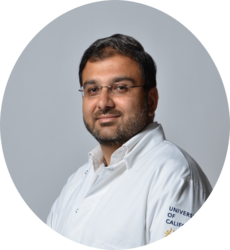

Invited speakers include:
TBA
Abstract IDs:
TBA
This session has been merged with “Molecular Spin Qubits toward Quantum Computer” session!
New Phenomena and Applications in Molecular Magnets


Session Topics Include (but not limited to) :
• Organic superconductors
• Carbon Based Superconductivity
• Molecular Magnetism
• Carbon based magnetism and grapheme
• Low dimensional magnetism
• Novel functional magnetic materials: Basic approach and applications
• Molecular Spintronics
• Molecular refrigeration
• Quantum Computation
Session Organizer/Moderator
Javier Campo, Yuko Hosokoshi


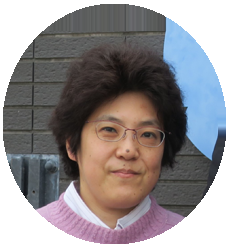

Prof. Dr. Yuko Hosokoshi is a scientist at the Osaka Prefecture University College of Technology. Her research fiels are Organic Radicals, Low-dimensional Magnets, Quantum Spin Systems, Magnetic Suscepfibiling, Crystal Structure, Low Temperature, Magnetic Field, Hight Pressure, Magnetism.
Invited speakers include:
Abstract IDs:
[1125],[1161],[1205],[1338],[1349]
Large scale facilities in magnetism, superconductivity and energy related materials


In this session we inted to gather the contributions that apply these techniques to solve many different problems in magnetism, superconductivity and energy related materials (in situ experiments in batteries, dispersion curves in low dimensional magnets, magnetic structures in bulk and multilayer materials, difussion phenomena in batteries, hidden gaps in superconductors, spin densities in molecular magnets, etc…) and in many different kind of materials (multiferroics, molecular magnets, batteries, superconductors, spin ices, Kagomé layers, 2D materials, magneto and electro caloric materials, catalizers, magnetic skyrmions and solitons, zeolites, SOFC electrolisers, etc….)
Session Topics Include (but not limited to) :
• Synchrotron X ray scattering
• Neutron Scattering
• Muon Spin rotation
• SANS and SAXS
• Powder and single crystal neutron and Xray diffraction
• Polarized neutron diffraction
• Triple axis spectroscopy
• In situ experiments
• Inelastic X-ray scattering
• Resonant X-ray scattering
• Neutron sources
• Extreme conditions experiments
• Neutron and Xray reflectivity experiments
• Neutron and Xray imaging and tomography
Session Organizer/Moderator
Javier Campo, Kazuki Ohishi, Masaki Fujita



His scientific interest is focused on the study of “Magnetic Chirality” and “Purely organic magnets” by using neutron scattering techniques and recently he started to work on “in operando studies of materials for energy applications” by using also neutron scattering. He has held several international membership, among others; vice-presidency of the European Neutron Scattering Association (ENSA), Spanish delegate at the ILL Steering Committee, Chair of the VI European Conference on Neutron Scattering, and Chair of the Spanish Committee for Large Scale Research Facilities.




His research areas of expertise are “High-transition-temperature superconductivity,” “Spin dynamics of spintronics-related materials,” and “Physical properties of high-entropy materials.” He uses neutron scattering, synchrotron X-ray, and muon spin rotation techniques for the broad research. In addition, he is in charge of three neutron scattering instruments at the research reactor JRR-3, Japan.
Invited speakers include:
Alicia Manjon-Sanz (SNS/ORNL, USA)
Ping Miao (CSNS, China)
Arsen Gukasov (LLB CEA-CNRS, CE-Saclay, France)
Andrei Rogalev (ESRF, France)
Takashi Kamiyama (CSNS, China)
Valeria Blanco (Instituto de Nanociencia y Materiales de Aragón (INMA), Spain)
Kenji Kojima (Centre for Molecular and Materials Science (TRIUMF), Canada)
Pedro Alonso (Instituto de Nanociencia y Materiales de Aragón (INMA), Spain)
Jun Sugiyama (CROSS Neutron Science and Technology Center, Japan)
Kazuki Ohishi (CROSS Neutron Science and Technology Center, Japan)
Masaki Fujita (Tohoku University, Japan)
Pavel Savchenkov (National Research Nuclear University MEPhI Russia)
Pedro Gorria (University of Oviedo Spain)
Abstract IDs:
Theory of Superconductivity
The aim of this session is to bring together the different scientists working in the area of theoretical descrşption of superconductivity. These are the different theories used today to understand, explain and predict the different properties of superconductivity, such as first-principles methods. The session attempts to cover a broad spectrum of news material and the anisotropy and multiband effects in new superconductors: cuprate superconductors, borocarbides, magnezium-diboride and oxypnictides.
Session Topics Include (but not limited to) :
• Multiband and anisotropic Ginzburg-Landau theory in application to new compounds
• Electron-boson coupling theory of superconductivity (BSC and Eliashberg theory)
• Theortetical description of superconductivity in strong correlated systems
• BCS-BEC crossover in new superconductors
Session Organizer/Moderator
Iman Askerzade


Invited speakers include:
Chi Ho Wong (Department of Physics, The Hong Kong University of Science and Technology, Hong Kong)
Mihail Croitoru (National Research University Higher School of Economics, Moscow, Russia)
Serghei Klimin (TQC, Universiteit Antwerpen Belgium)
Abstract IDs:
[1056],[1084],[1086],[1110],[1131],[1255],[1277],[1341],[216]


